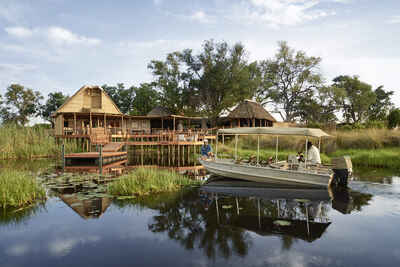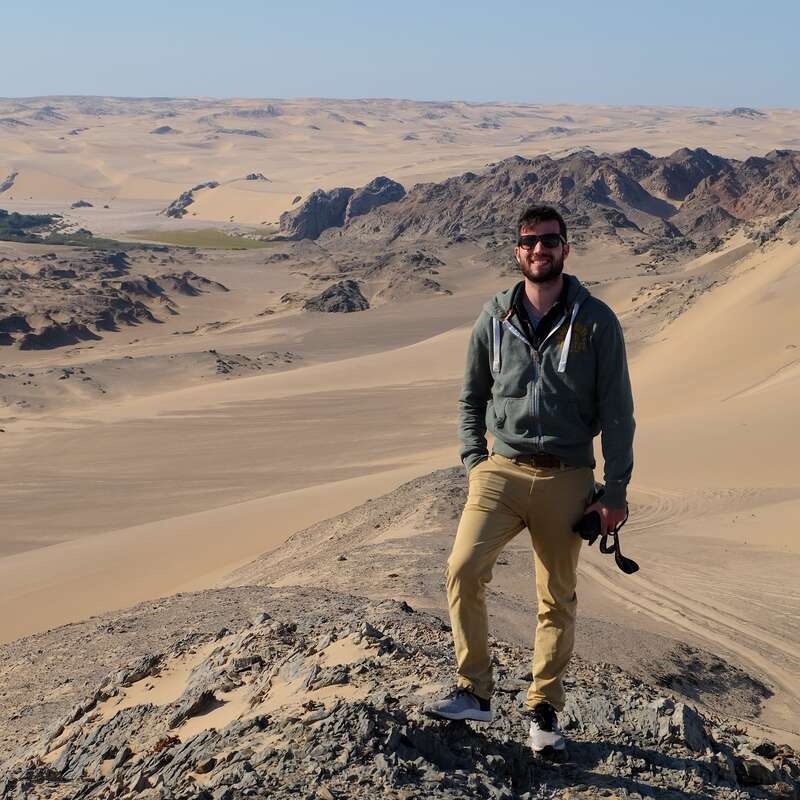About Baines' Camp
Baines' Camp lies in a beautiful, private area of Botswana's Okavango Delta, neighbouring the Moremi Game ...
... Reserve and facing the Boro River – one of the Delta's main arteries. Named after the famed Victorian explorer and artist, Thomas Baines, the camp is notable for its innovative construction and its ever-popular roll-out “star beds”.
Please note: Baine's Camp will be closed for a major rebuild until early July 2025 and will reopen as Baines’ Lodge.
Baines' is smart, comfortable and well-equipped, with varied activities according to the Delta's flood levels. Although there is plenty of general wildlife, game densities are limited compared to the high standards of many other parts of the Okavango, and we wouldn't suggest this area if you are particularly keen on seeing predators. Instead, come for the luxury camp with beautiful scenery, delicious meals, outdoor bath and star bed. Your guide will work hard to find the animals, but let that be an added bonus.
Our view
Baines' is smart, comfortable and well-equipped, with varied activities according to the Delta's flood levels. Although there is plenty of general wildlife, game densities are limited compared to the high standards of many other parts of the Okavango, and we wouldn't suggest this area if you are particularly keen on seeing predators. Instead, come for the luxury camp with beautiful scenery, delicious meals, outdoor bath and star bed. Your guide will work hard to find the animals, but let that be an added bonus.
Accommodation
6 suites
Children
Best for 16+
Open
All year
Activities

4WD Safari

Birdwatching

Boat trip

Elephant encounter

Fishing

Guided walking safari

Helicopter

Mokoro

Night drive

Private activities

Sleeping under the stars
Traveller reviews of Baines' Camp
17 real, un-edited reviews from Expert Africa's travellers.
Arrived 29 Sep 2018, 3 nights
"Fabulous Baines "
Overall rating: Excellent
Arrived 22 Nov 2017, 4 nights
"Baines' Camp review"
Overall rating: Average
Arrived 4 Oct 2017, 3 nights
"Baines' Camp review"
Overall rating: Excellent
Arrived 6 Sep 2015, 2 nights
"Baines' Camp review"
Overall rating: Excellent
Arrived 28 May 2015, 2 nights
"Baines' Camp review"
Overall rating: Good
Arrived 1 Jun 2014, 2 nights
"Baines' Camp review"
Overall rating: Excellent
Arrived 8 May 2014, 2 nights
"Baines' Camp review"
Overall rating: Good
Arrived 15 Jun 2013, 2 nights
"A Lovely Camp and great Elephant Experience"
Overall rating: Excellent
Arrived 15 Apr 2013, 3 nights
"Baines Camp, real elephant experience"
Overall rating: Excellent
Arrived 31 Mar 2013, 3 nights
"Baines' Camp review"
Overall rating: Excellent
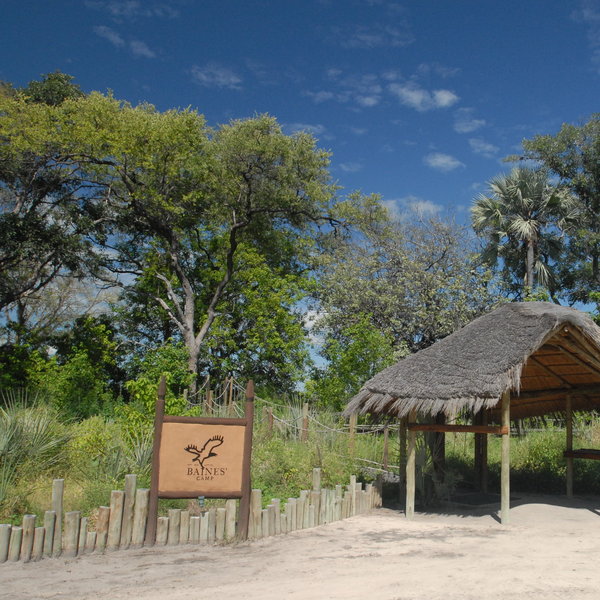
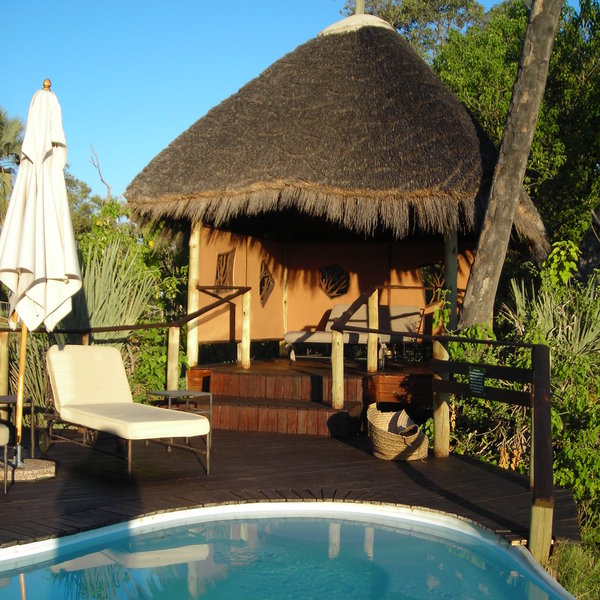
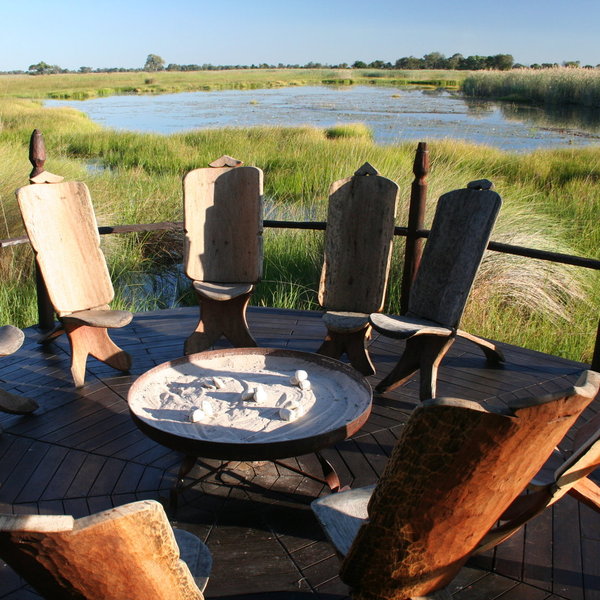
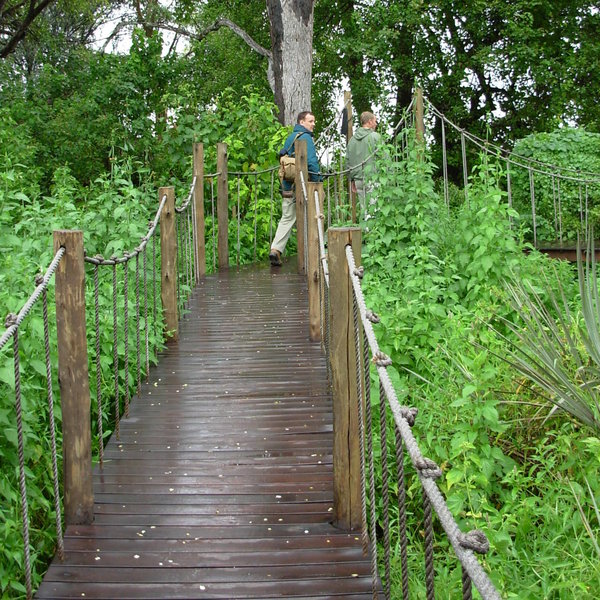
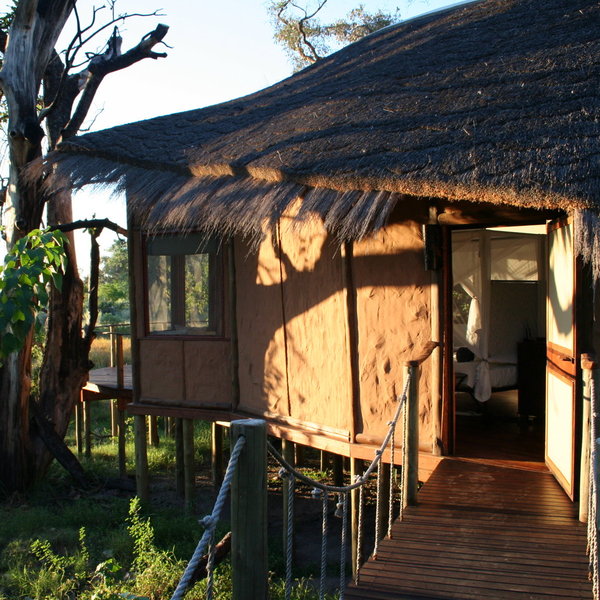
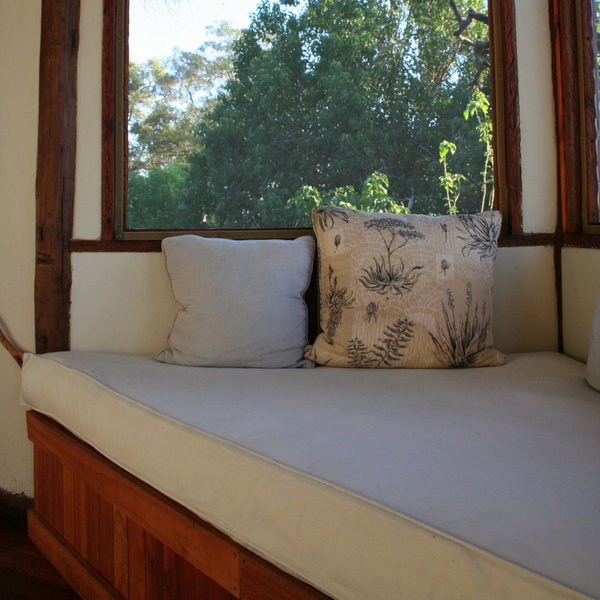
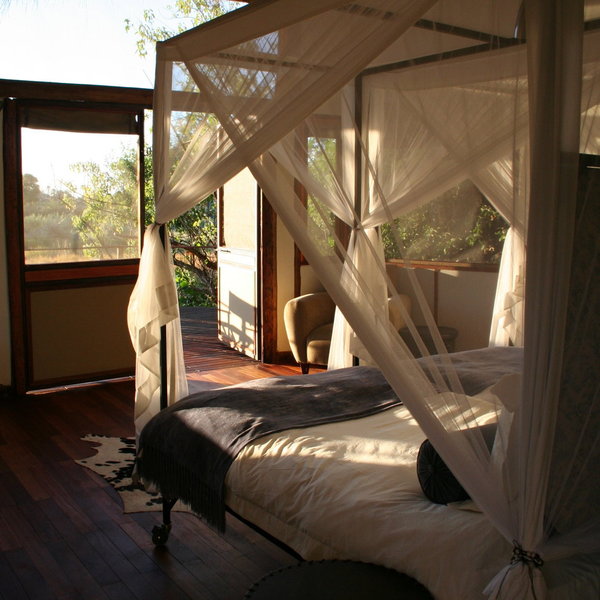
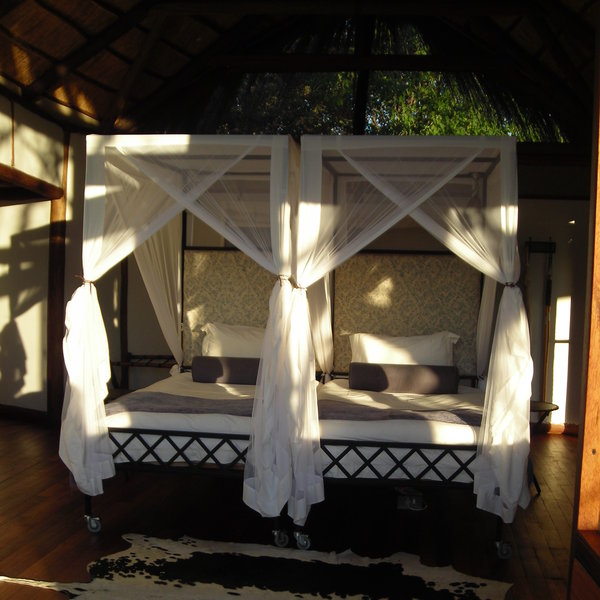
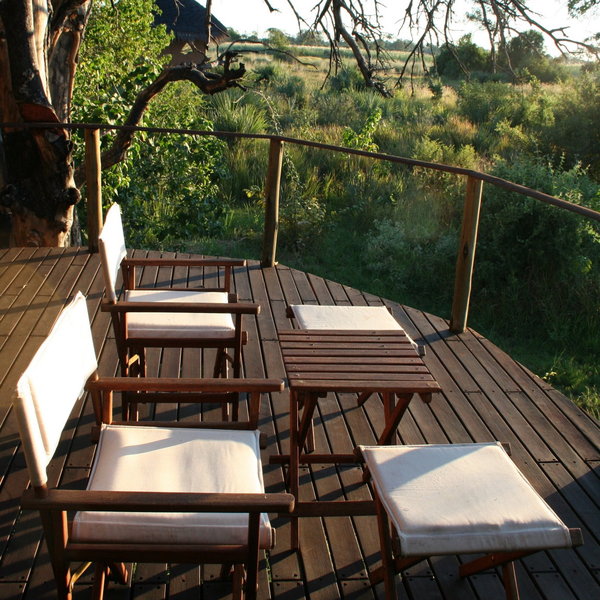
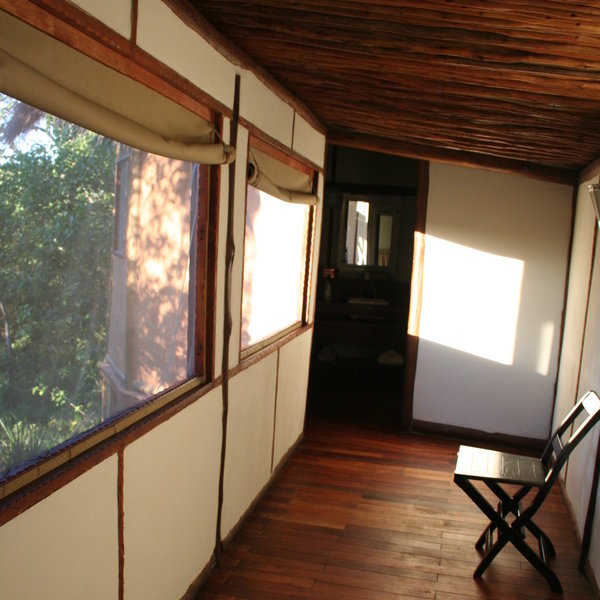
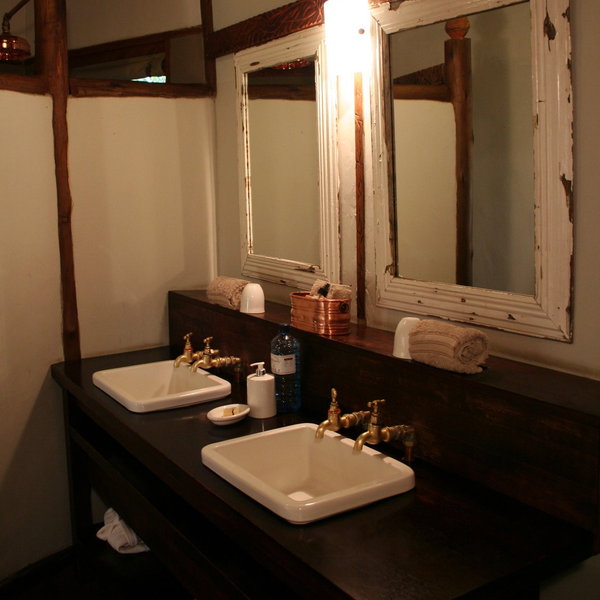
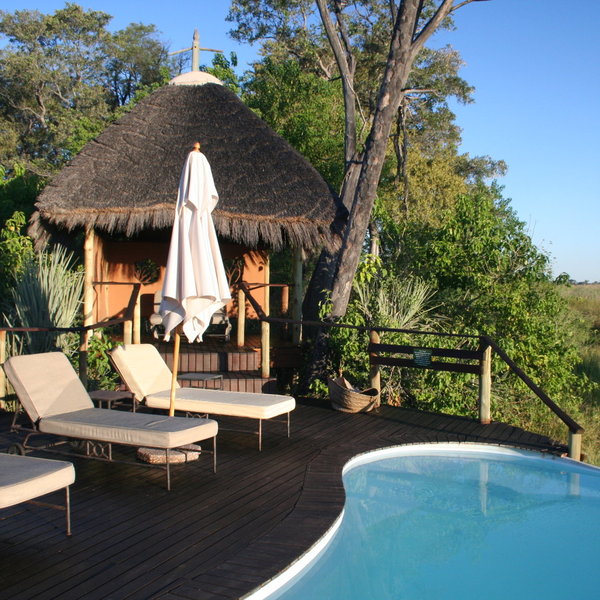
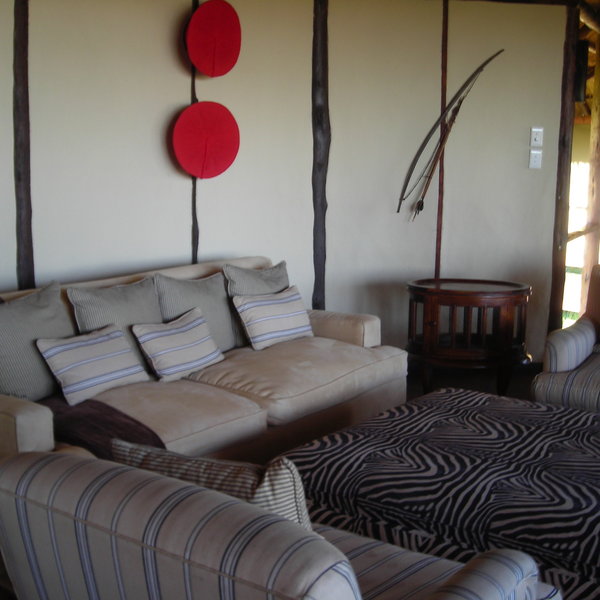
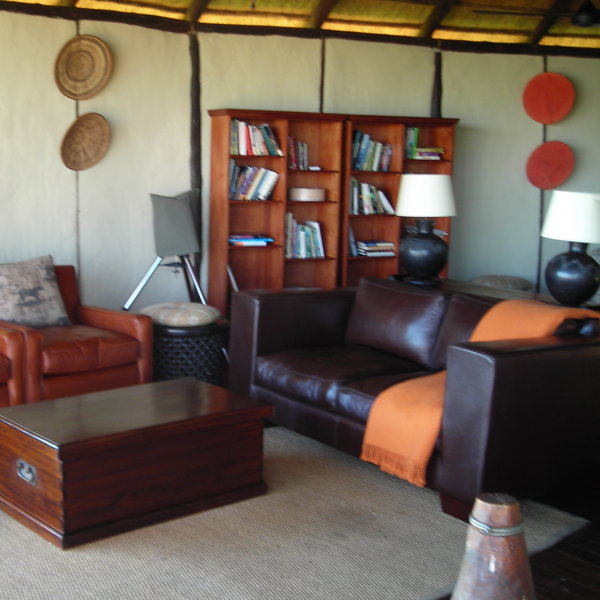
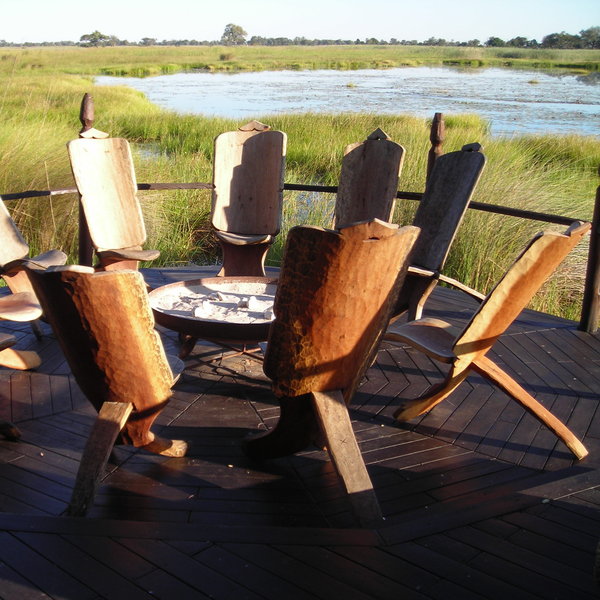
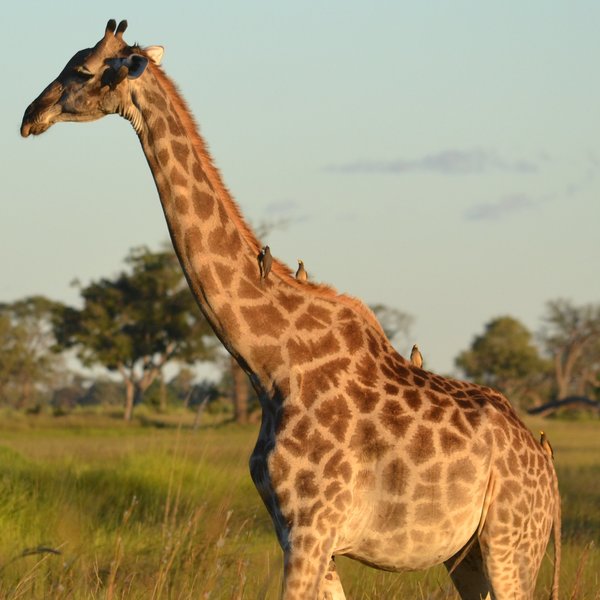
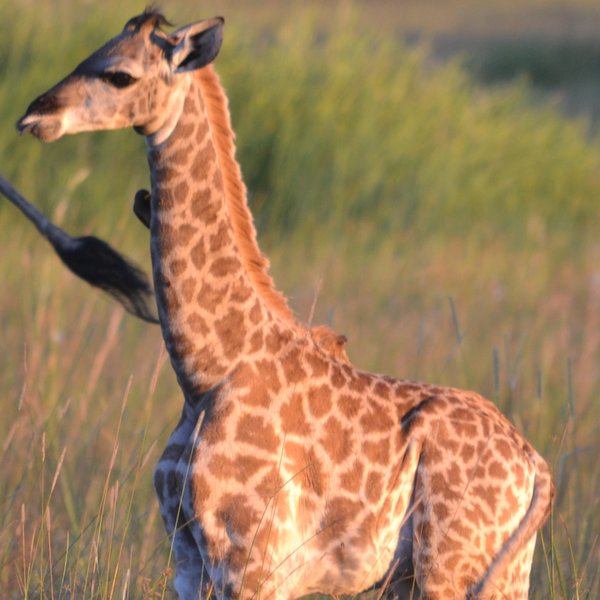
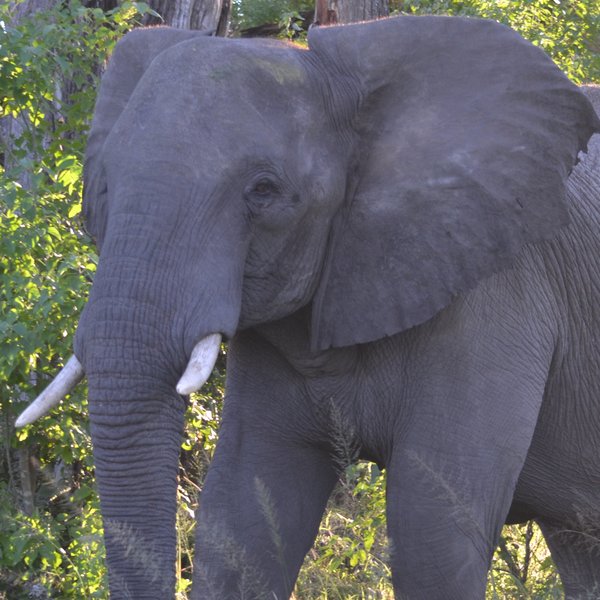
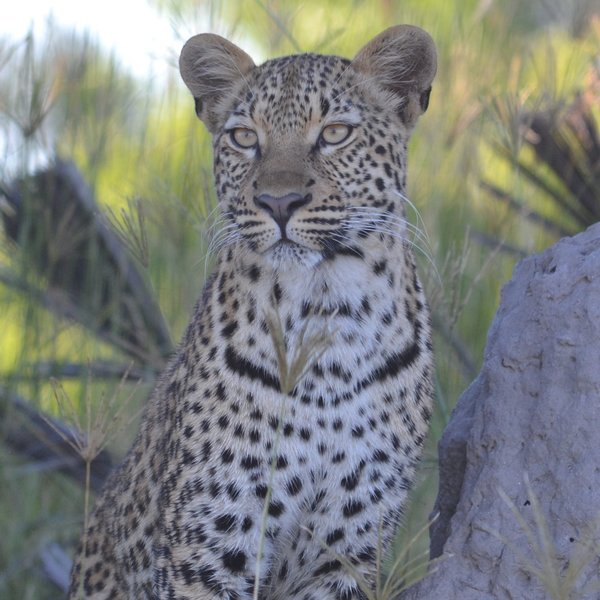
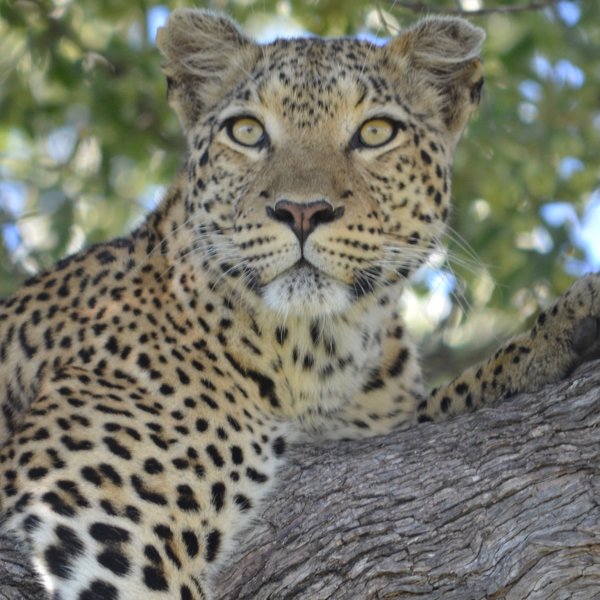
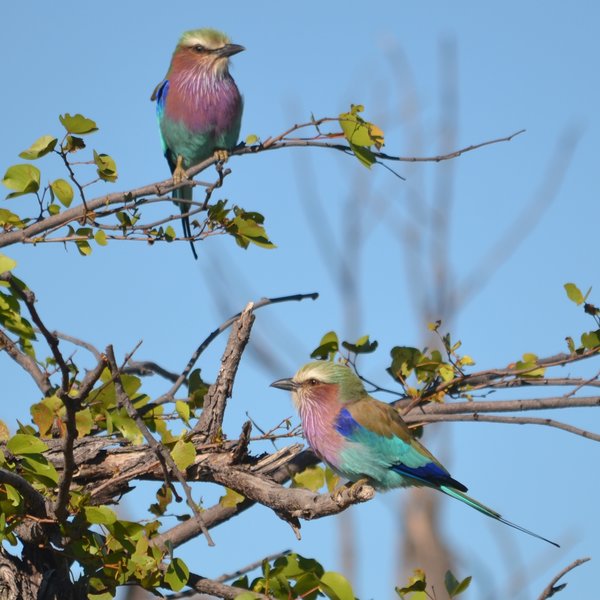
Expert Africa's gallery
When we travel we take lots of photos ourselves to give you a real and un-edited view of the safaris. See our 29 pictures and 1 videos of Baines' Camp to get the candid view.
View galleryBaines' Camp: Our full report
Baines' Camp lies in a beautiful, private area of Botswana's Okavango Delta, neighbouring the Moremi Game ...
... Reserve and facing the Boro River – one of the Delta's main arteries. Named after the famed Victorian explorer and artist, Thomas Baines, the camp is notable for its innovative construction and its ever-popular roll-out “star beds”.
Please note: Baine's Camp will be closed for a major rebuild until early July 2025 and will reopen as Baines’ Lodge.
Baines' Camp shares a 1,050km² private community-run concession (NG32) with the larger and slightly less costly, Stanley's Camp . On the opposite eastern side of the reserve are Qorokwe Camp and Gomoti Plains Camp – although it’s highly unlikely that you’ll come across their safari vehicles as the distance is vast and the camps are separated by rivers and seasonal floodplains.
Baines’ was first built in 2005 and was one of the leaders in Botswana’s luxury fly-in safari market. When we visited we thought it was looking lovely.
Bright pops of colour in the rugs, curtains, bed throws and cushions enliven a stylish décor of whites and creams, a refreshing change from the neutral tones at most safari camps. And the view from Baines’ Camp really is beautiful, even by Botswana standards.
It’s an intimate camp with just six suites, all raised on high wooden decks overlooking the surrounding bush and tall reed-beds that flank the Boro River. With “solid” walls made from recycled drinks' cans and plaster containing elephant dung, the construction is certainly unusual, but the finished effect is novel and much smarter than the ingredients might suggest! Thatched roofs help to keep the suites airy and cool in the hot summer months, and warm and cosy in the winter.
At the heart of each bedroom, a large, wooden four-poster bed, draped with a mosquito net, can – on request – be rolled out through double doors onto your private deck so you can sleep beneath the stars. These decks overlook the Boro River and/or floodplain, with a couple of chairs and a table with umbrella so that you can enjoy the outdoors during the day.
Back inside, a couple of comfortable metal-frame chairs woven in bright-coloured rope add a slightly quirky feel, and paint, paper and a paintbrush are supplied, should you be inspired to emulate the artist Thomas Baines. A small desk with international plug points is useful for charging batteries.
Behind the bed is an open wardrobe with ample hanging space and shelving, a luggage rack, and a sideboard with a well-stocked minibar, and a tea and coffee station complete with small kettle, coffee plunger and jar of biscuits. Unusually for an Okavango camp, a hairdryer is also provided. Useful extras include both a ceiling fan and a standing fan, a torch, a radio for emergency contact, mosquito repellent, and a gym bag with two yoga mats and pair of dumbbells.
The en-suite bathrooms showcase his and hers washbasins on a grey marble countertop beneath two mirrors. To one side is a toilet in a separate cubicle, and to the other an ample-sized indoor shower with a view, while double doors lead outside on to a deck. The free-standing, outdoor bath is also new: ideal for a romantic and relaxing candlelit bath under the night sky. A range of Africology toiletries is provided, along with slippers and bathrobes.
Inter-leading walkways link the suites and the main area, which is relatively small but cosy – perfect for a camp of this size. Nestled amongst the papyrus reeds and with uninterrupted views of the Boro River, this too is built on raised wooden decking, around a central (unoccupied!) termite mound. In the lounge, three individual seating areas are decorated in bright colours with hand-woven baskets, colourful ceramics, and a fairly retro hanging chair. Both this and the open-sided dining room, where we watched three sitatunga grazing during breakfast, lead onto a deck, with a small boma area and firepit where pre- and post-dinner drinks are served.
A much-needed addition to Baines’ Camp is the spacious new bar, where guests can now help themselves to drinks in the main area. Built on a separate deck and under its own tall thatched roof, it too has fabulous views over the Boro River – and it comes with a pizza oven too!
A couple of glass cabinets at the entrance serve as a curio shop, where there is an interesting cross-section showing how the camp walls are constructed from thousands of used cans collected by a local community in Maun. A fee was paid for every can: quite innovative and very eco-friendly.
Away from the main area, between rooms 3 and 4, there is a lovely rim-flow pool with a sundeck and loungers, as well as two large, shady salas (day beds). Thoughtfully, the camp has also provided a fridge well-stocked with refreshments. You will often get elephant and hippo wandering through this area of the camp.
Activities from Baines' include both day and night 4WD safari drives, which can go off-road to track game within the private concession. Game drives may also traverse into the southern portion of the Moremi Game Reserve, onto Chief’s Island, but only when water levels are sufficiently low.
Boat excursions and mokoro trips depend on water levels too: In years where there is very little summer rain, neither will run. During a previous visit, when water levels were high enough, we took part in the mokoro activity, spotting plenty of birdlife from the water as well as the tiny but twinkle-sounding painted reed frog – along with the more obvious elephant and hippopotamus.
Walking safaris at Baines’ are available on request; if these interest you, do let us know well in advance so the camp can try to ensure that suitably qualified guides are available during your stay.
Historically, we've not had the best wildlife sightings at Baines'. Game densities in this area tend to be lower than in other parts of the Okavango Delta. given the vast floodplains which are either covered in very tall grass during the rainy, summer season, or with shallow flood water during the dry, winter season. From our experience, game viewing here is at its best during the dry season, from around May until end October, when the grass is low. on our last trip in March the grass was tall and it was difficult to spot animals, but we did find a pride of nine lions with cubs, and also saw giraffe, elephant, warthog, reedbuck, red lechwe and tsessebe, while another group saw a leopard and a pack of eight African wild dogs. Despite this, leopard and lion in this area can be difficult to spot.
Birdwatching, on the other hand, is consistently good here. Over the years our varied bird count has included coppery-tailed coucal, black-winged stilt, black-chested snake eagle, African harrier-hawk (gymnogene), Dickinson's kestrel, bateleur, African fish eagle, pelicans, lilac-breasted roller, Burchell's starling, and saddle-billed stork.
Activities
4WD Safari
Birdwatching
Boat trip
Elephant encounter
Fishing
Guided walking safari
Helicopter
Mokoro
Night drive
Private activities
Sleeping under the stars
Families & children
- Attitude towards children
- Children aged 16 and over are welcome.
- Property’s age restrictions
- Children aged 16 years and older can stay at Baines'.
- Special activities & services
- The camp has a few board games like chess and chequers, and a swimming pool which can be enjoyed during the day.
- Equipment
- There are no family rooms, but an extra bed can be added to the rooms to make a, fairly squashed, triple room to share.
- Generally recommended for children
- Game drives, especially when water levels are high, can be hard going. Because of this, and the intimacy of the camp, we'd generally recommend Baines' for adults.
- Notes
- Wildlife wanders through Baines' Camp regularly. The pool is unfenced and there is open water in front of camp with very little to act as a barrier. Even older children must be under the supervision of their parents.
Food & drink
- Usual board basis
- Full Board & Activities
- Food quality
- Over the years our meals at Baines' Camp have been creative, delicious and varied. Guests normally eat at individual tables, but should you prefer to dine with other guests this can easily be arranged. The boma evening is a group affair, with guests dining together close to the barbecue, under the stars.
Breakfast is offered before heading out on the morning activity. As well as the usual coffee and tea, toast, fresh muffins and cereal, we also had the choice of cold meats, fruit, yoghurt, cheeses, croissants and even a full cooked option breakfast made to order.
Lunch is plated, and usually three courses. We started with a delicious sweet potato soup, followed by a selection of salads and pizzas, with by rooibos crème brulée for dessert.
For afternoon tea, just before the afternoon activity, we enjoyed iced coffee, a slice of coffee cake and a vegetable spring roll. Tea, lemonade, and various fruits were also provided, in addition to other sweet treats.
Dinner at Baines' Camp is a plated three-course meal, usually with a choice of two starters, main dishes and desserts. We opted for crumbed camembert with redcurrant sauce followed by grilled pork with fondant potatoes and roasted vegetables and finished with poached pear in red wine jus – all delicious. - Dining style
- Individual Tables
- Dining locations
- Indoor and Outdoor Dining
- Further dining info, including room service
- Group dining is on request, and for boma night.
- Drinks included
- Bottled water, soft drinks, local beers and spirits and a limited selection of (usually) South African red and white wines are included. Champagne and imported wines and spirits will cost extra and may need to be requested in
advance.
There is borehole water for brushing teeth, but bottled drinking water is imported from Maun.
Our travellers’ wildlife sightings from Baines' Camp
Since mid-2018, many of our travellers who stayed at Baines' Camp have kindly recorded their wildlife sightings and shared them with us. The results are below. Click an animal to see more, and here to see more on our methodology.

100% success

100% success

100% success

100% success

100% success

100% success

100% success

100% success

0% success

0% success

0% success

0% success

0% success

0% success

0% success

0% success

0% success

0% success
Getting there
- Location
- Okavango Delta Safari Reserves, Botswana
- Ideal length of stay
- We’d typically recommend two nights here. However, during the peak season (June–October), three nights would give more chance to explore and possibly see more wildlife.
- Directions
- Access is by light aircraft to the camp's airstrip (15 minutes from Maun and 1 hour 15 minutes from Kasane), which is shared with its sister camp, Stanley's. From there it's approximately 45–60 minutes by vehicle to the camp, depending on water levels. When water levels allow, the transfer may be by boat instead.
- Accessible by
- Fly-and-Transfer
Special interests
- Honeymoons
- Baines' Camp is a lovely, romantic camp for a Botswana honeymoon. The star beds – double beds that can be rolled out on to your own private deck at night – offer something quite special, and an intimate private dinner table and candle-lit bath under the stars will be happily arranged on request.
- See ideas for Honeymoons in Botswana
Communications
- Power supply notes
- Solar with a back-up generator. Baines’ is gradually switching to running solely on solar power, with the generator to be used just as a back-up. Power is available in camp 24 hours.
Each suite has a multi-point plug adaptor. - Communications
- The camp is in radio contact with the Maun office. WiFi is available in the suites, but there is no cellphone reception.
- TV & radio
- No
- Water supply
- Borehole
- Water supply notes
- There is bottled water for brushing teeth and bathing. All rooms have plumbed-in showers and flush toilets.
Health & safety
- Malarial protection recommended
- Yes
- Medical care
- All the managers are first-aid trained and there are full trauma kits on site. Nurses are in direct contact with management to help stabilise patients if necessary. Medical evacuation is available from the camp, with a helicopter able to land three minutes' walk away. In an emergency, guests can be flown to Maun or Johannesburg.
- Dangerous animals
- High Risk
- Security measures
- There is a radio in each suite, so that guests can contact the managers in an emergency. Guests are escorted between the main area and their rooms after dark.
- Fire safety
- There are fire extinguishers at each of the suites and in the main area. The camp also has a water-trailer which can be utilised in the event of fire.
Useful info
- Disabled access
- Not Possible
- Laundry facilities
- Included (including smalls). Clothes are both line and tumble-dried.
- Money
- The camp does not offer currency exchange facilities. There is a small safe in each of the suites that is large enough to store a wallet and/or travel documents.
- Accepted payment on location
- Mastercard and Visa credit cards are accepted; Diners and Amex are not. Cash payments may be made in the form of GB pounds, US dollars, South African rand, euros and Botswana pula, with change given in pula.
Plan and book your trip with Expert Africa
All of our trips are tailor-made, so we'll always adapt them to suit you. Talk to an Expert and let us plan and arrange your perfect trip.

Talk to an Expert
Call or email us now! We’ll match you with the Specialist in our team who is best suited to help you. Then together we can start planning your trip.

Set up your itinerary
Based on our experience and your ideas, your specialist will create a detailed, costed itinerary. We’ll refine it together, until we have a trip that you’re perfectly happy with.

Prepare for your trip
The same Specialist will make the seamless arrangements for your trip, send you detailed travel documents, and be available to answer any questions before you depart.

Travel with peace of mind
After you set off, you’ll be cared for by our partners in Africa, most of whom have worked with Expert Africa for decades. And if you ever need us urgently, we’re available 24/7.

When you return
We love to learn about your trip, and so will always be grateful if you’ve the time to give feedback to your Specialist when you return.
Baines' Camp's location
Look closer at the environment and surroundings of Baines' Camp.
Excursions from Baines' Camp
Optional extra day-trips and excursions possible whilst you're staying at Baines' Camp. Talk to us: these are usually best arranged before you go.
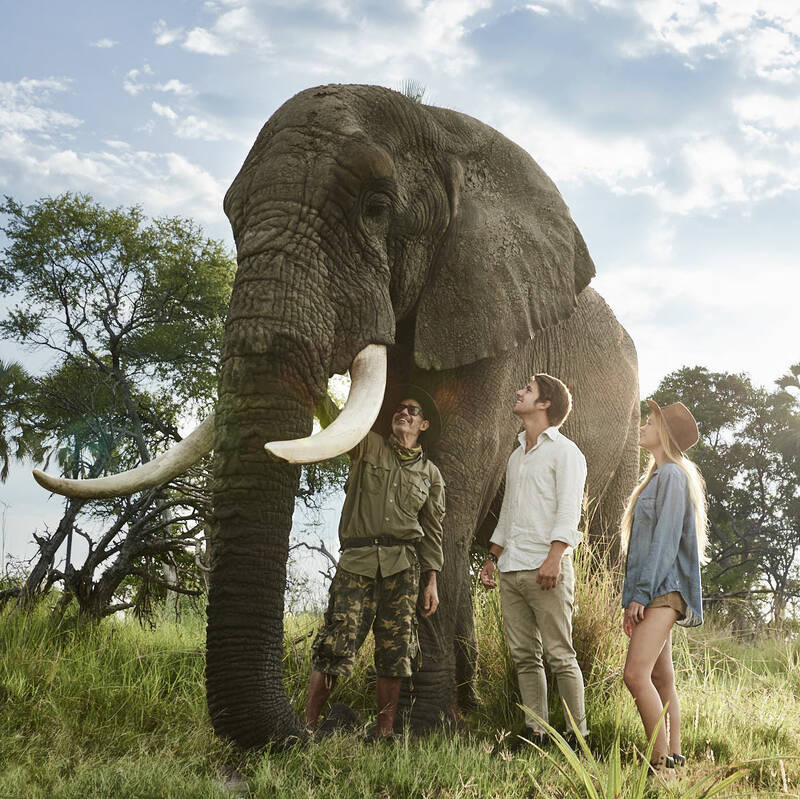
Elephant Activity
Half day - mornings only
Any stay to Baines' Camp and Stanley's Camp is synonymous with the acclaimed elephant activity! Join experts Doug and Sandi Groves in a gentle, interactive experience walking with the two elephants Jabulani and Marula. This experience is a must for all lovers of elephants and wildlife!
More about Elephant Activity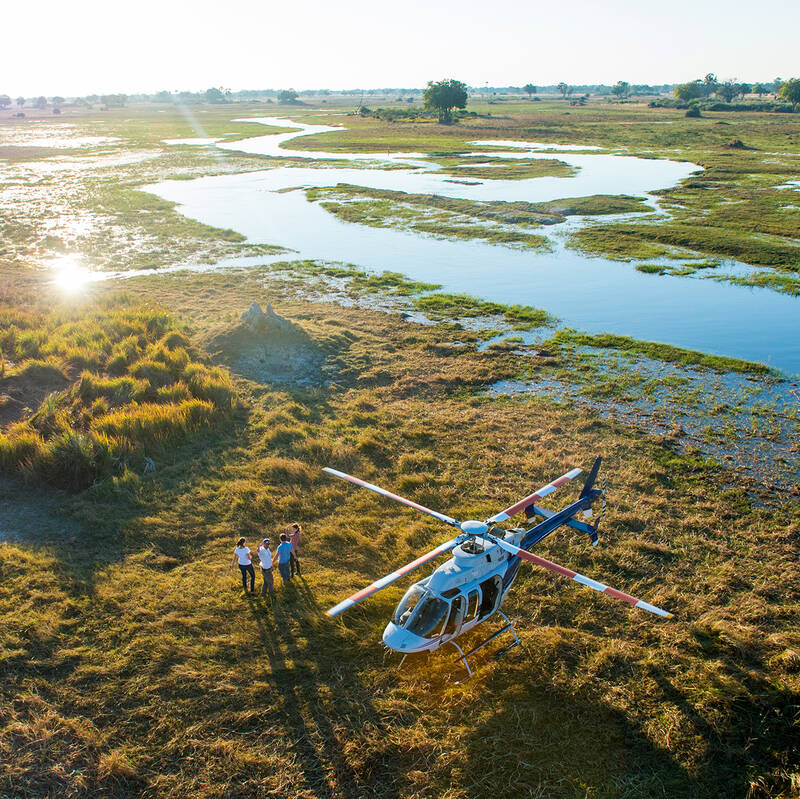
Helicopter Flight - Botswana
Various: from 30 minutes to half a day.
Low-flying, agile and offering superb views, helicopters are an ideal way to move around the Okavango Delta.You can use them instead of fixed-wing inter-lodge transfers or as an addition to other wildlife watching activities, and of course, helicopters can hover to allow that perfect pic, whereas fixed-wings can’t.
More about Helicopter FlightOther lodges in Okavango Delta Safari Reserves
Alternative places to stay in this same area.
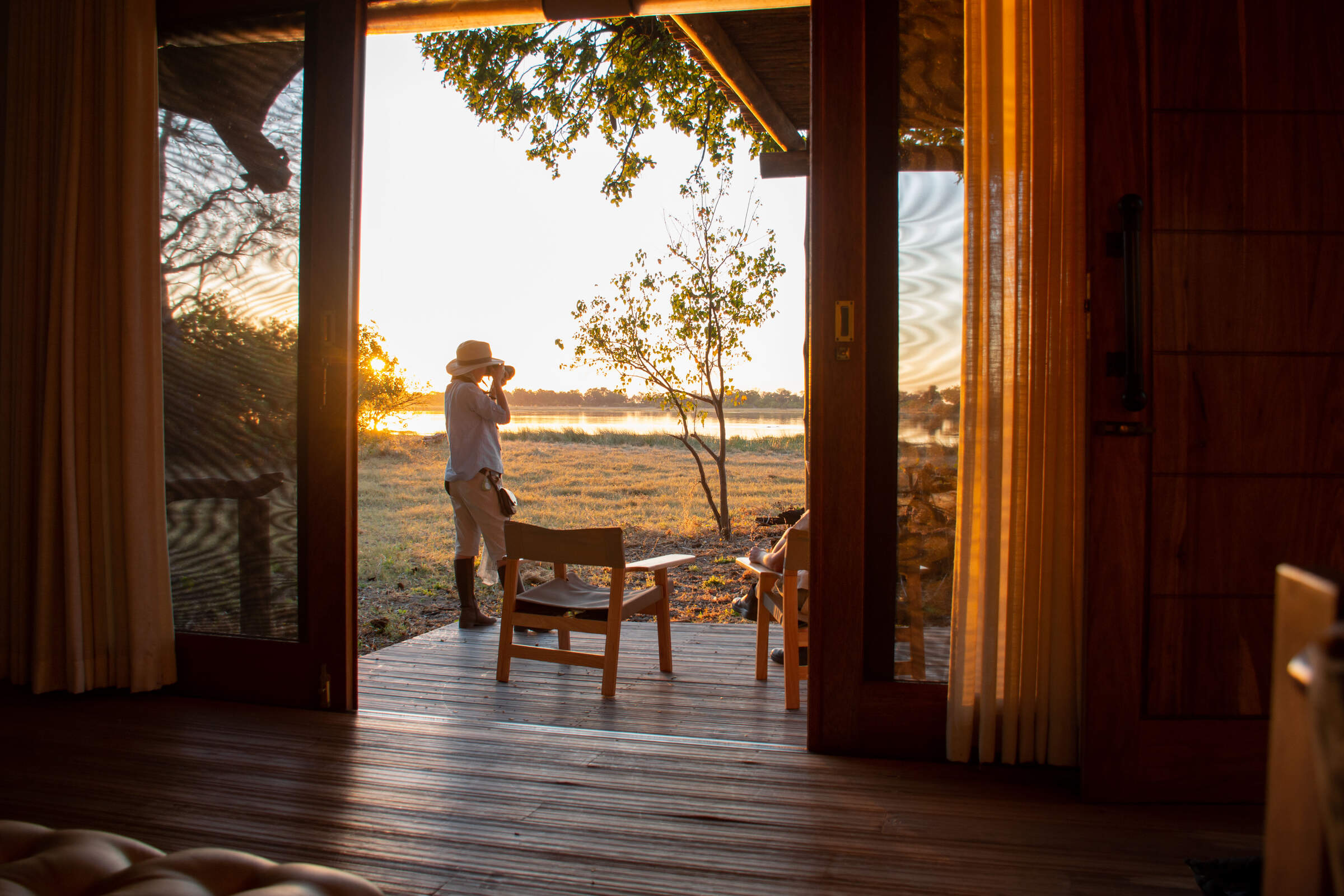
Kwara Camp
Kwara Camp's private reserve boasts land and water activities year-round, with excellent game-viewing opportunities and access to permanent channels of the north-east Okavango Delta.
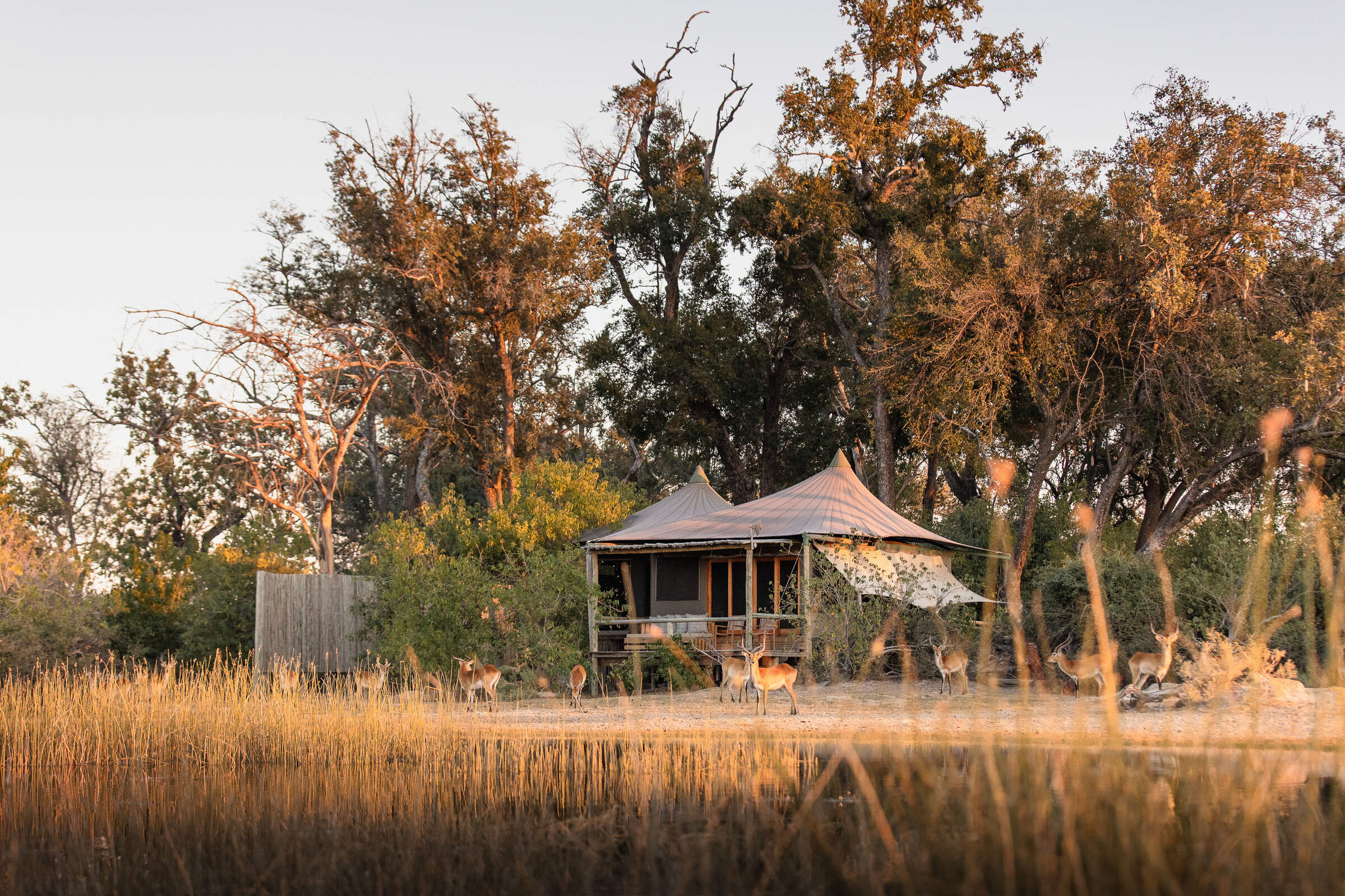
Little Vumbura
On a secluded island within a private reserve, Little Vumbura combines superb game viewing with a broad diversity of habitats in a truly picturesque setting.
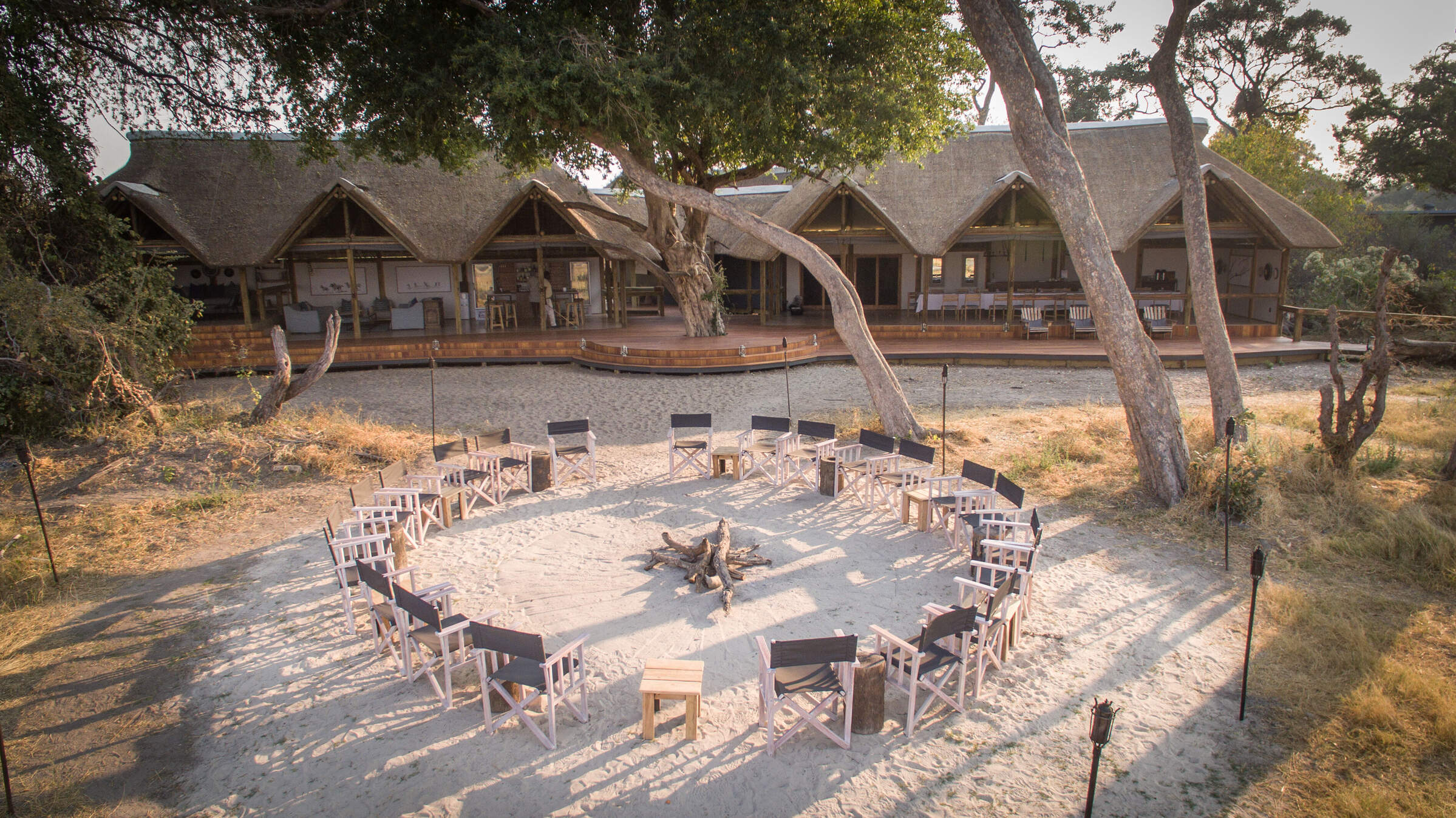
Splash Camp
Set in the Kwara Reserve, offering superb wildlife viewing year-round, Splash offers both land and water activities led by guides with a particular knack for tracking big game.
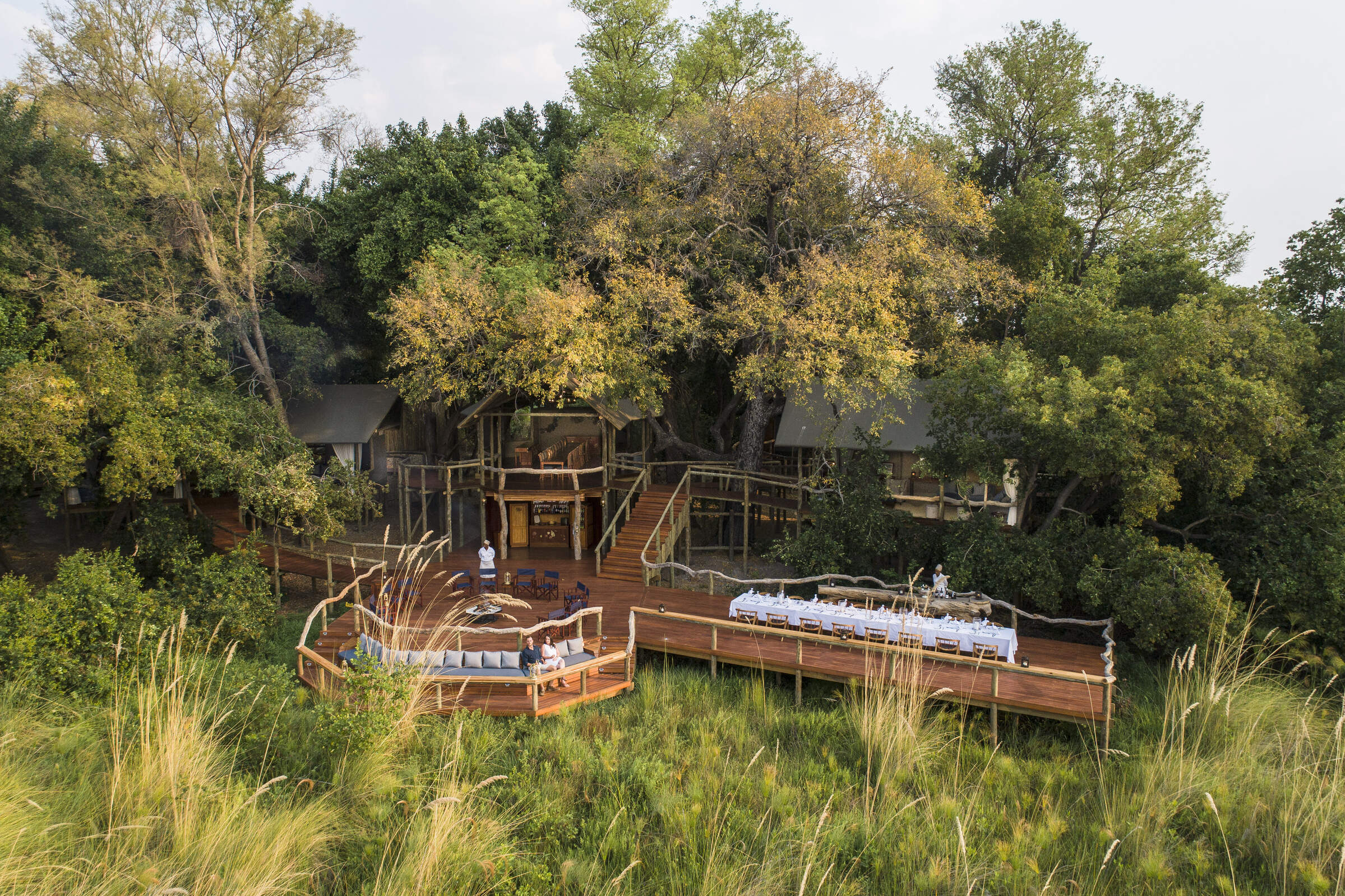
Shinde Camp
With experienced staff and a wealth of activities, Shinde offers a traditional safari in an exceptionally varied and wildlife-rich environment.
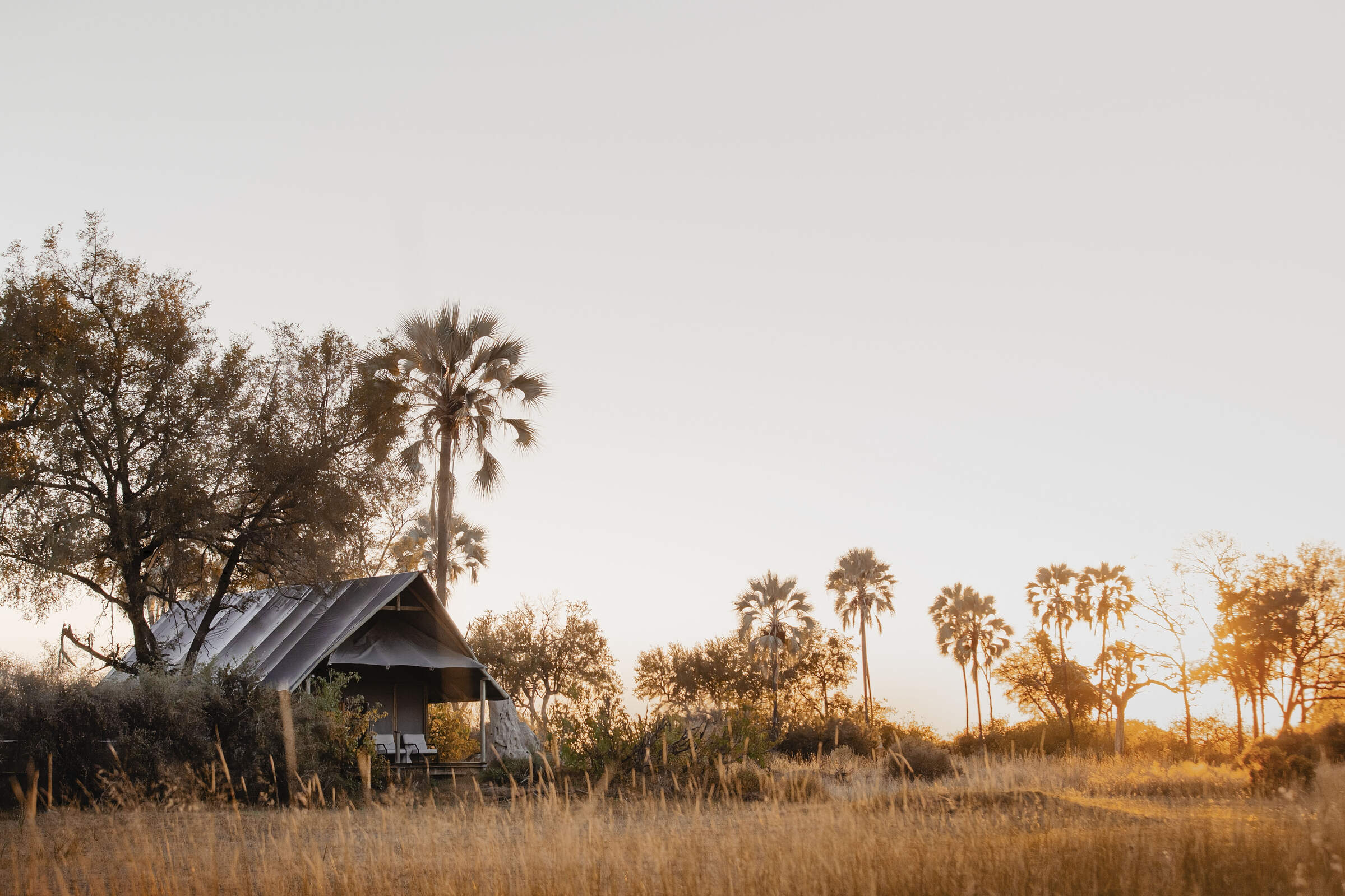
Chitabe Lediba
Chitabe Lediba, in Botswana's southern Okavango Delta, is a small family friendly safari camp; it offers great dry-land safaris and in our experience consistently delivers good game sightings.
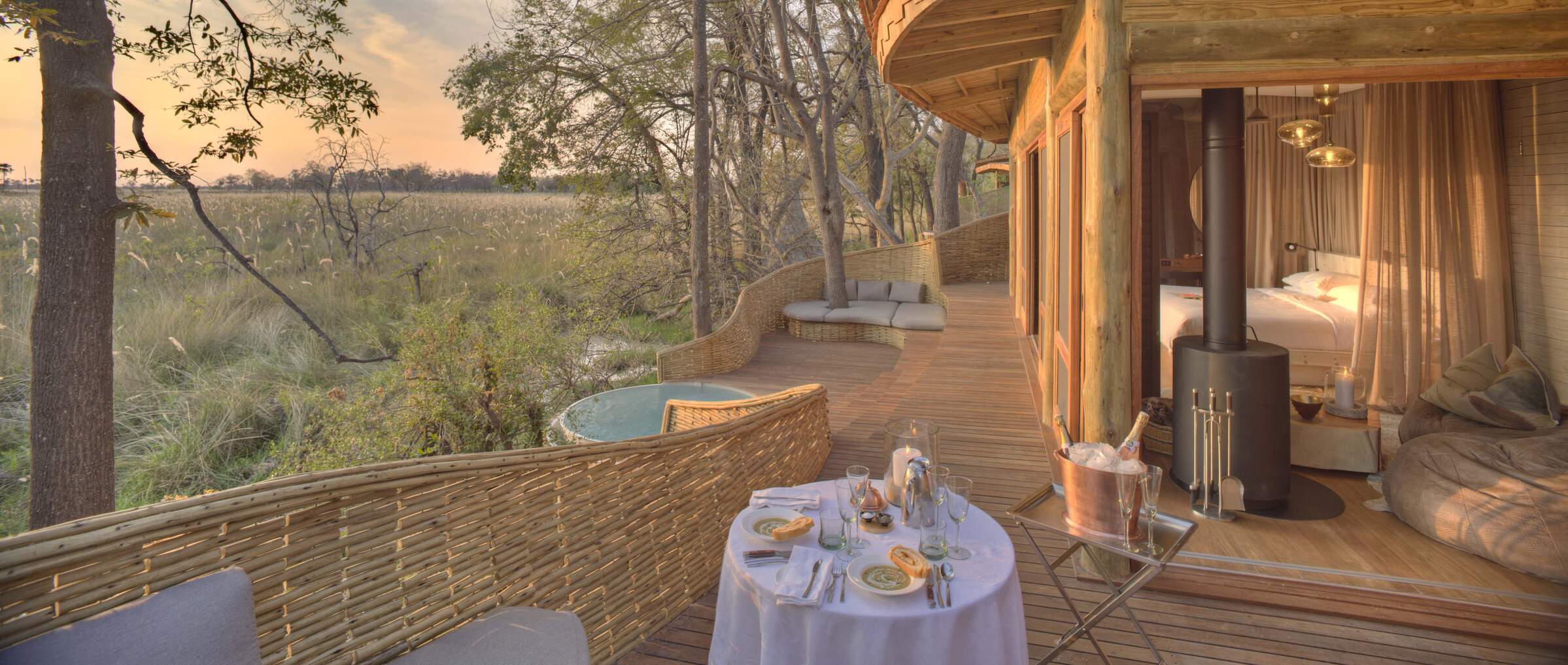
Sandibe Safari Lodge
The luxurious Sandibe Okavango Safari Lodge lies in a private concession in the heart of the Okavango Delta, beside Moremi Game Reserve, with superb big-game viewing.
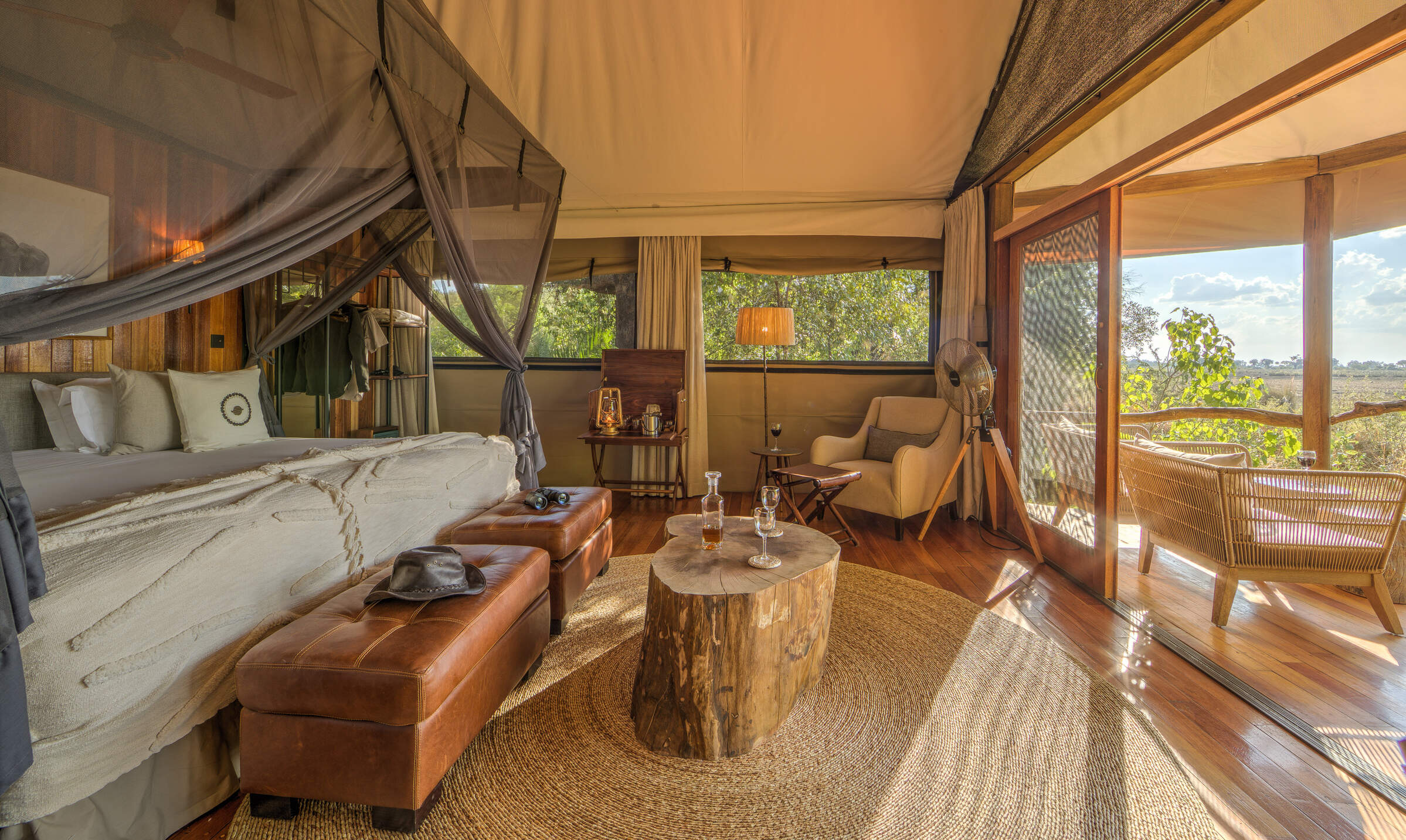
Kanana
In a beautiful part of the Delta, Kanana focuses on fantastic water activities and birding – including exclusive access to an impressive heronry.
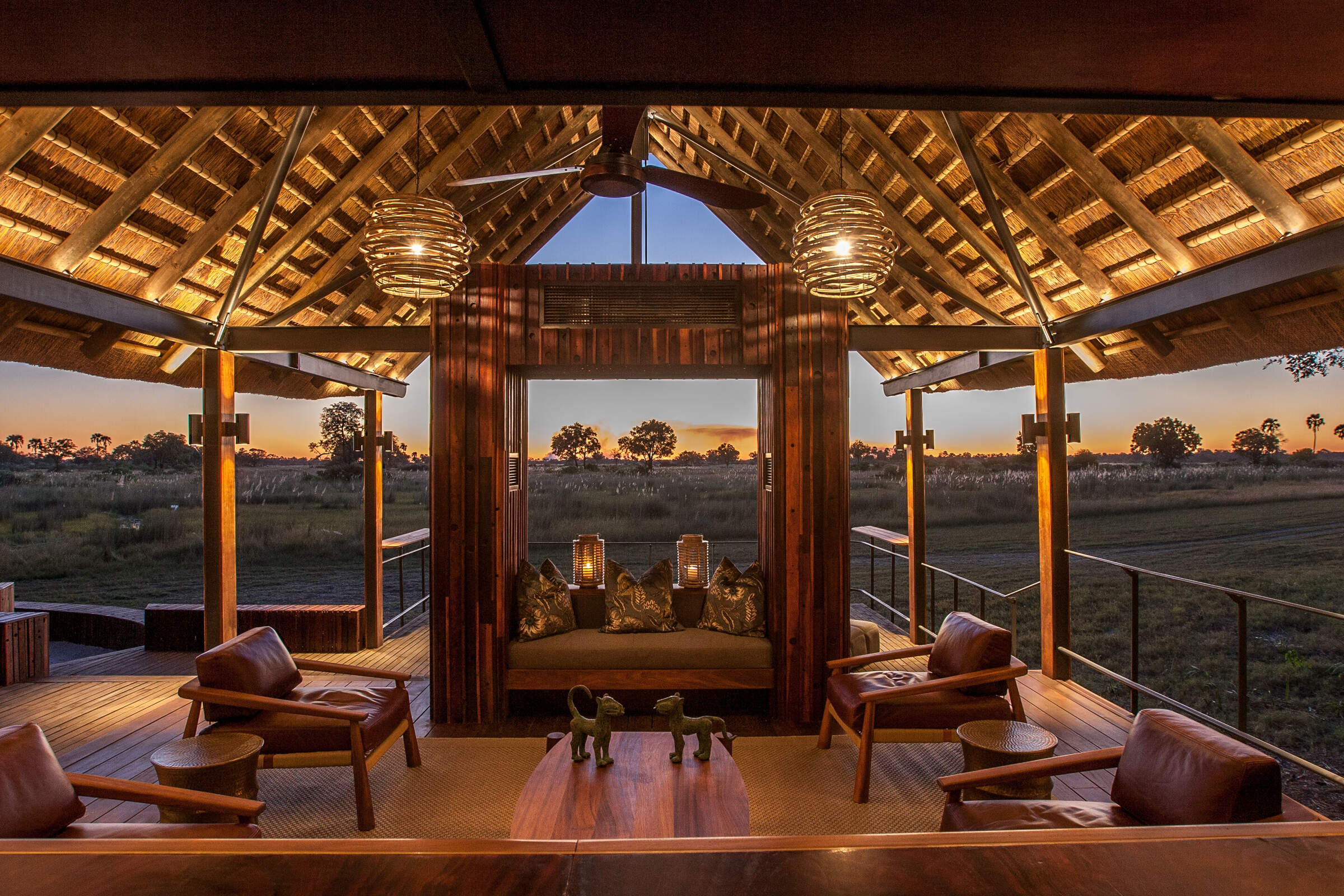
Chitabe Camp
In the southern Okavango Delta, the excellent Chitabe Camp concentrates on dry-land safaris in an area that we've found particularly good for wild dog sightings.
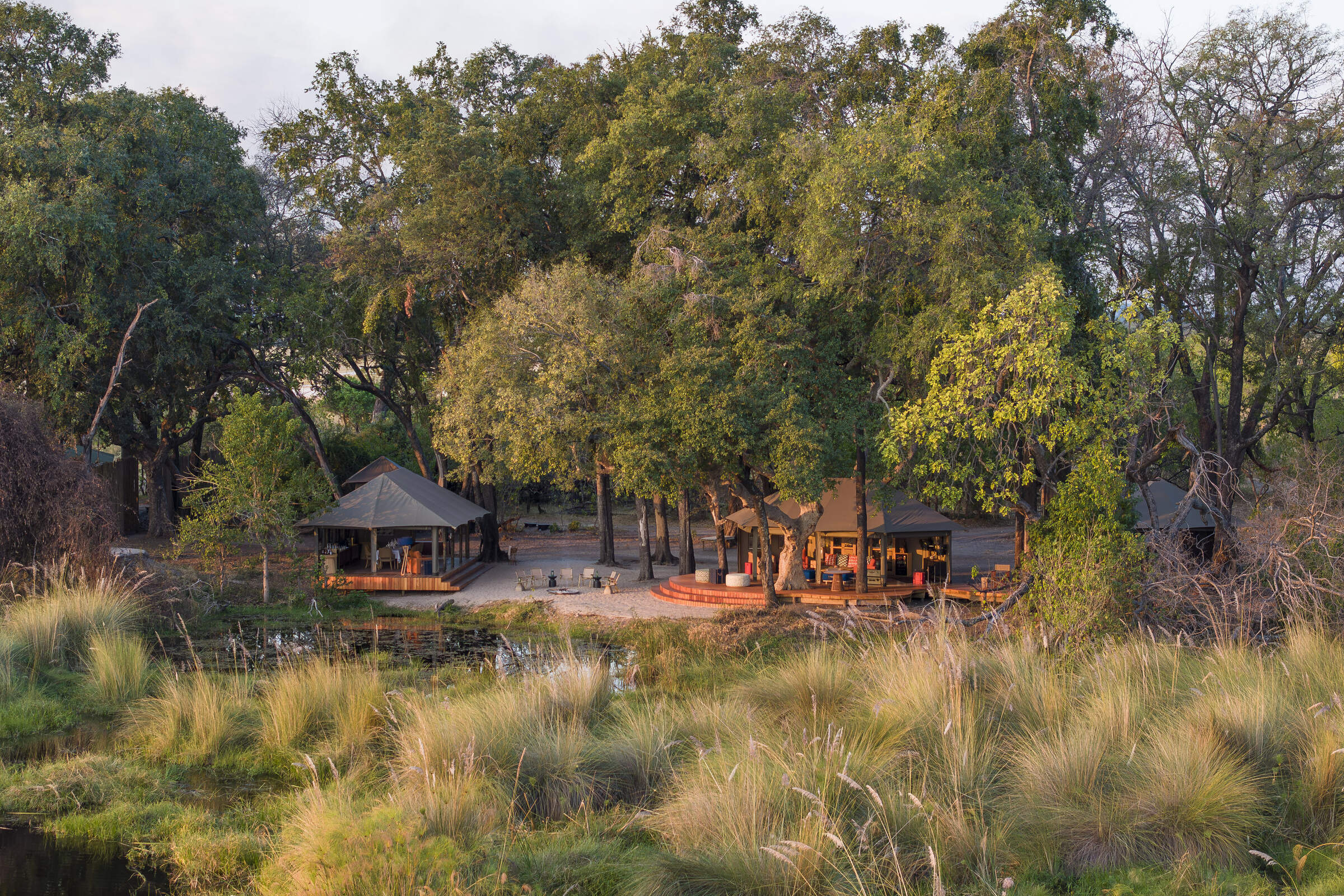
Shinde Footsteps
Small and simple, but comfortable, Shinde Footsteps focuses on walking safaris as well as game drives; it also runs a special children's programme so is particularly suitable for families.
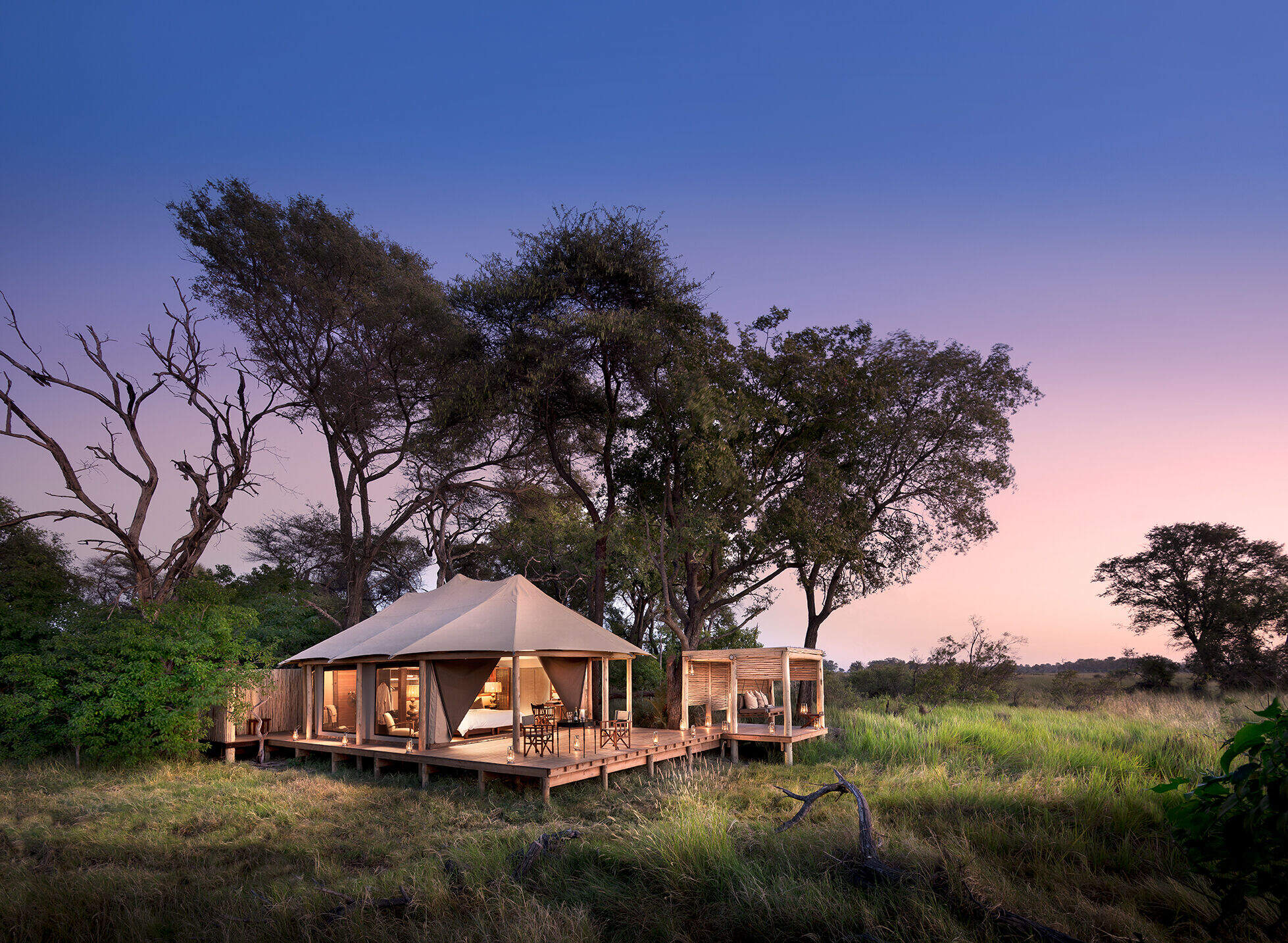
Nxabega Tented Camp
Nxabega offers a selection of both land- and water-based activities, plus very good guiding, food and service, but game viewing can be somewhat erratic.
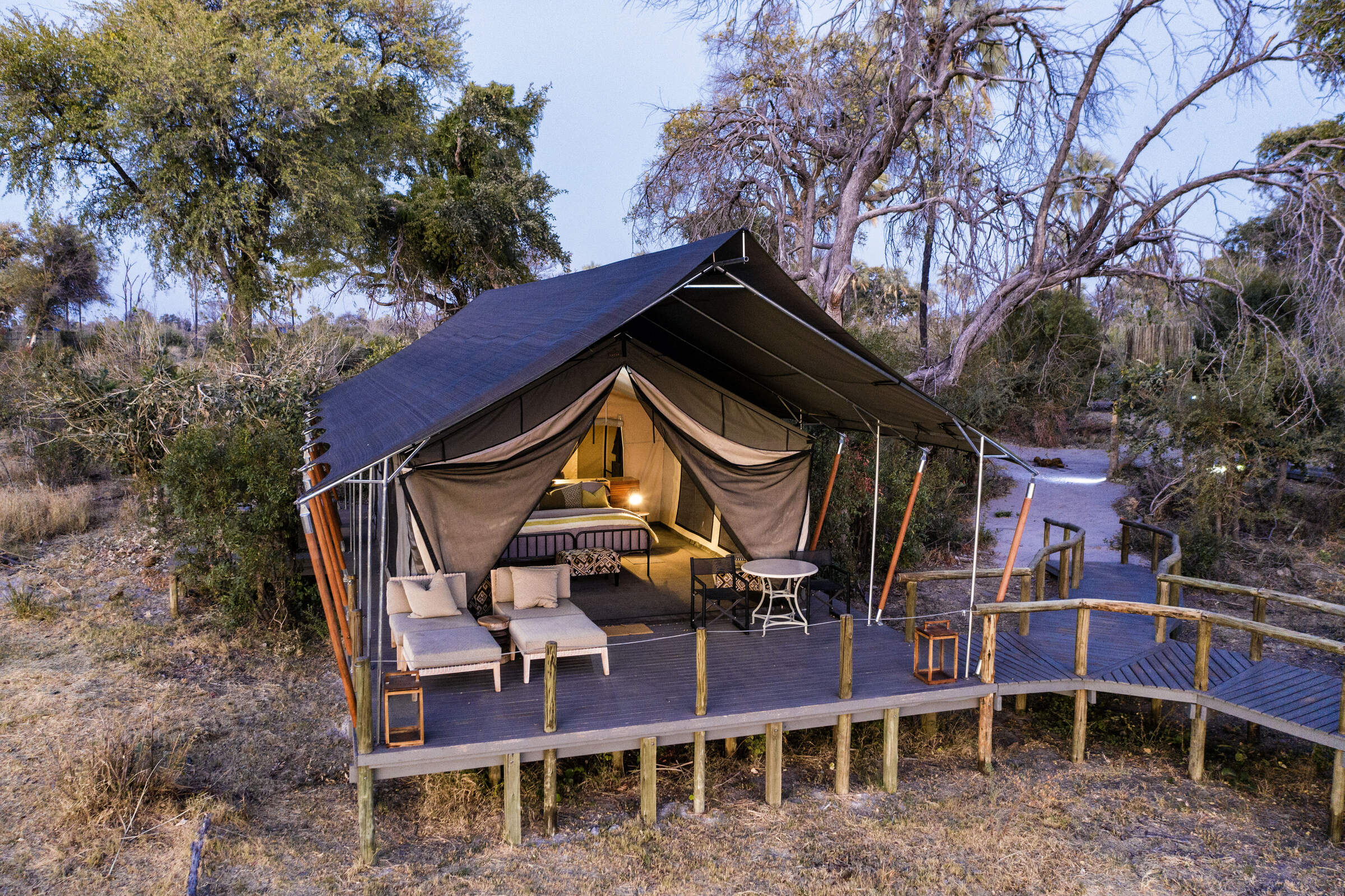
Gomoti Plains
Overlooking a tributary of the Gomoti River, Gomoti Plains Camp is a classically designed camp with very comfortable tents in a good game-viewing area.
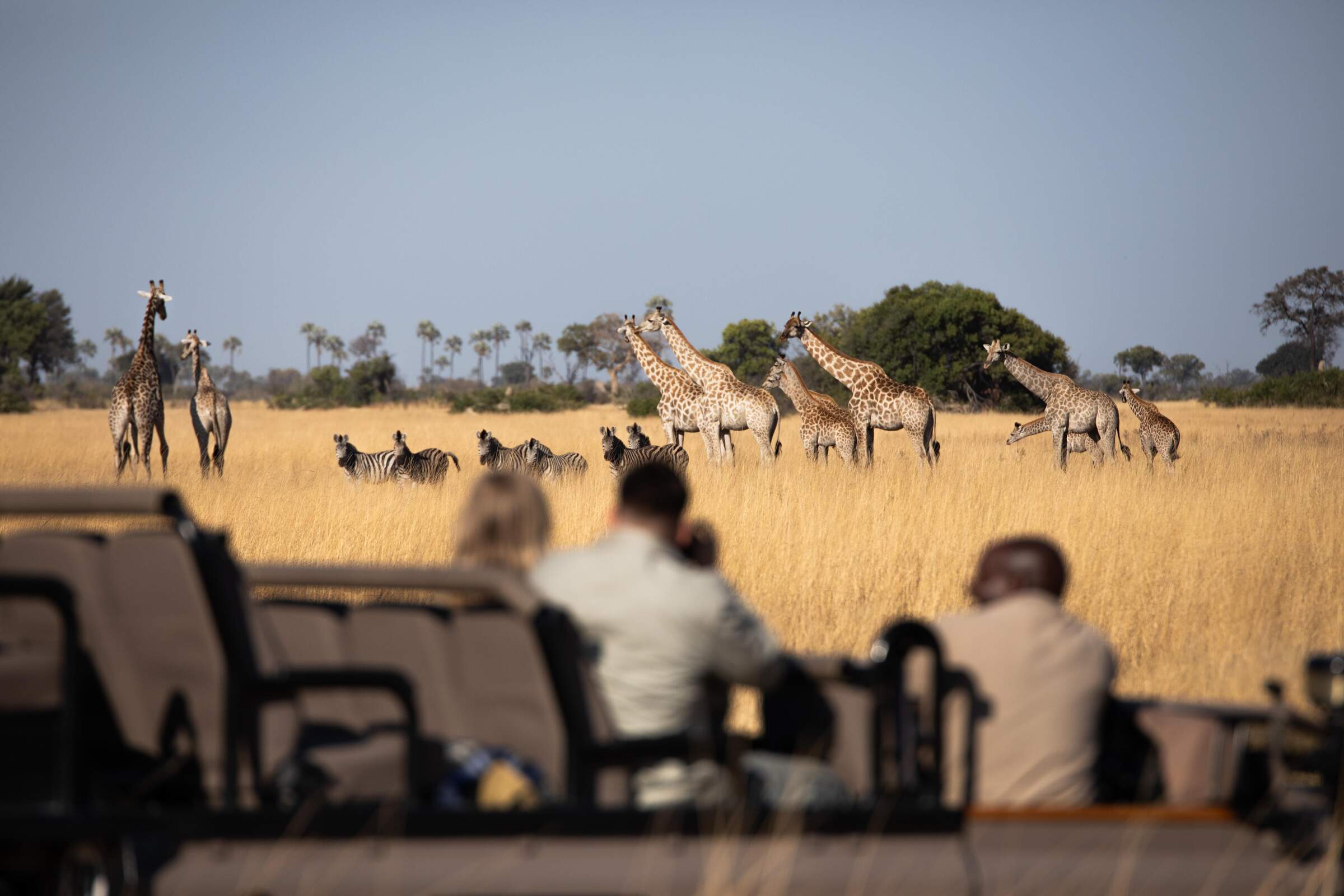
Tubu Tree Camp
A traditional tented camp with a distinctive tree-house feel, Tubu Tree offers some of the best game viewing in the Jao Reserve.
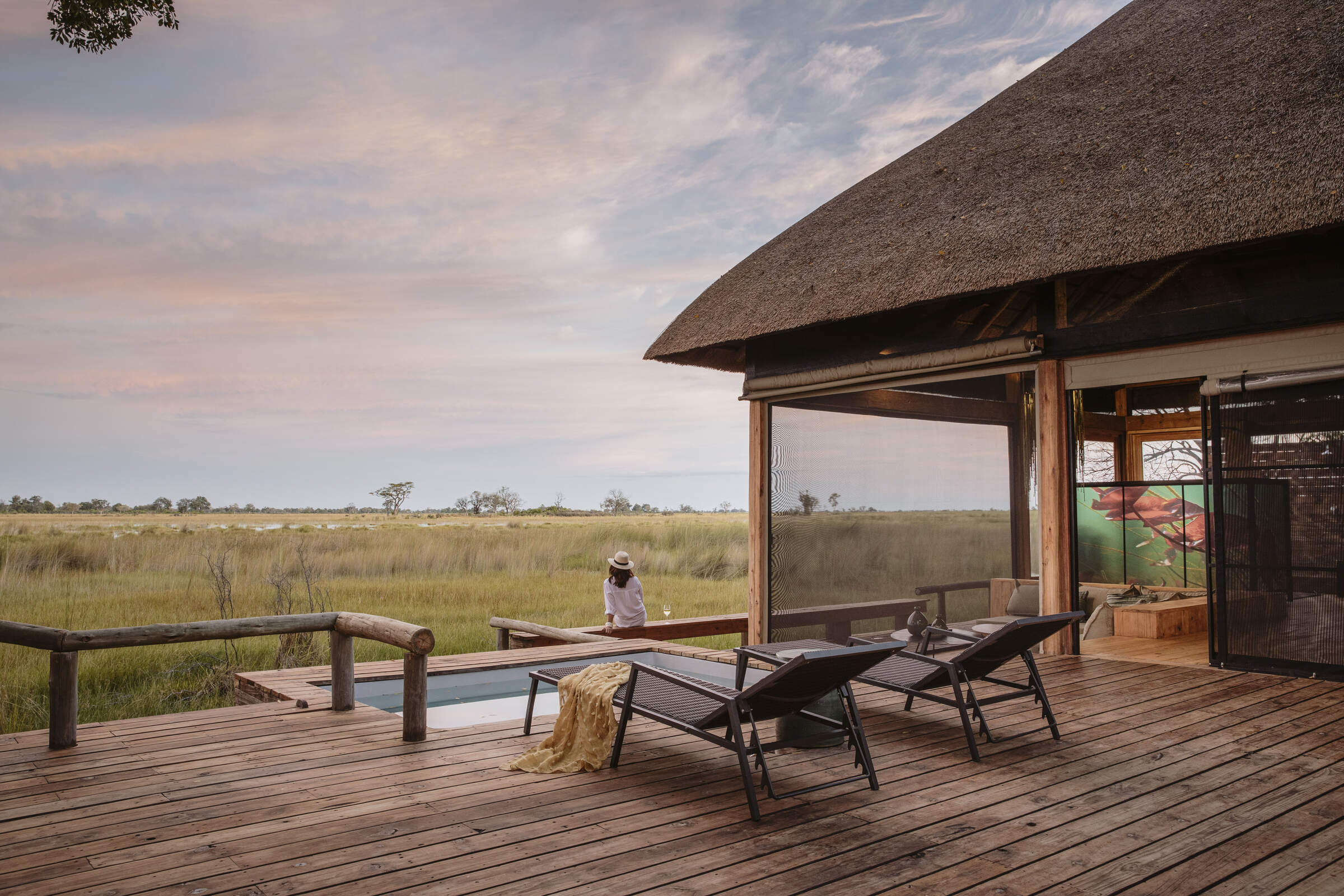
Vumbura Plains
Indulgently stylish and luxurious, Vumbura Plains offers superb game viewing and birding on an exceptionally varied private reserve.
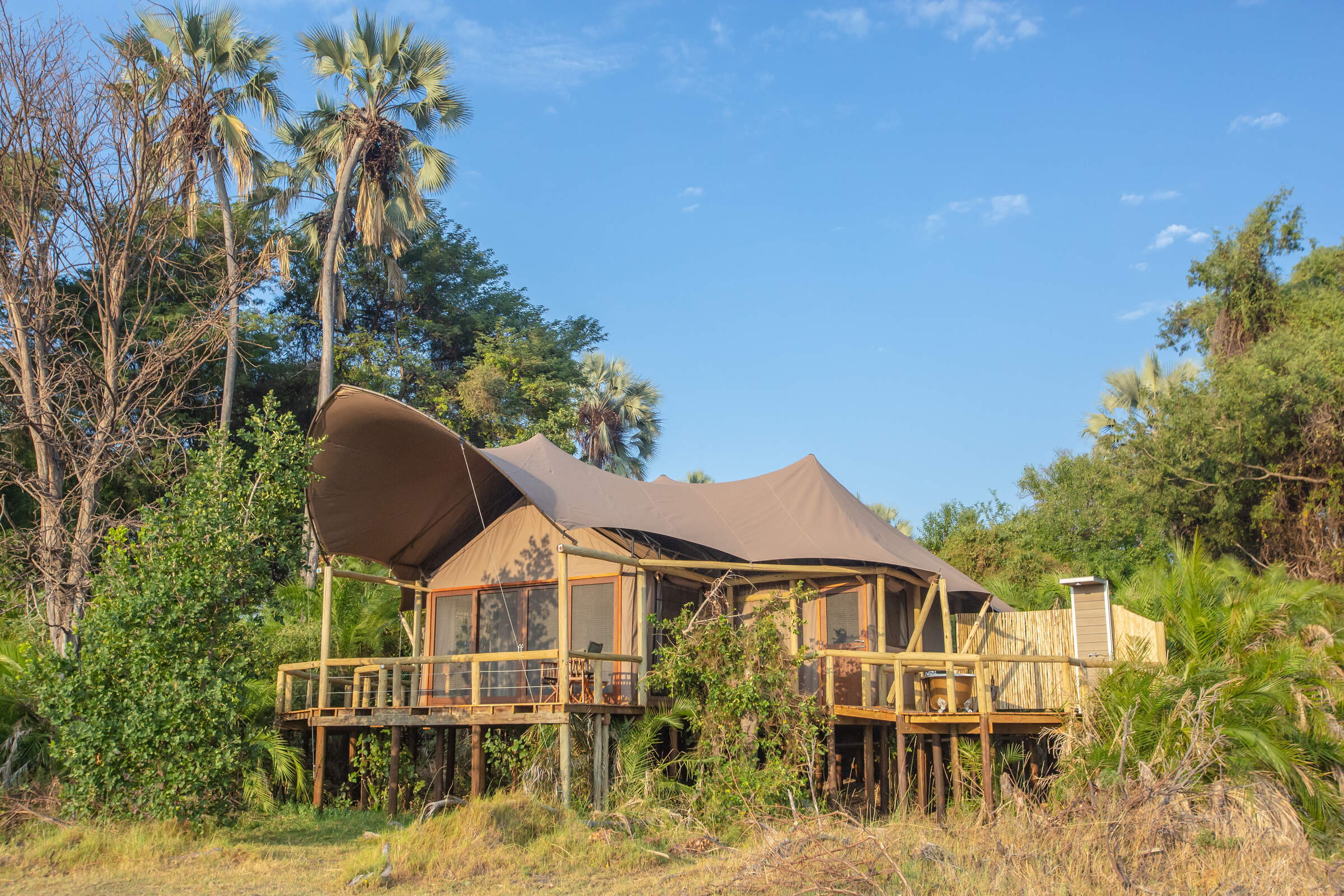
Jacana Camp
Jacana Camp is a small safari camp with an informal island feel; it is ideal for water-based activities in the Delta and offers excellent birdwatching.
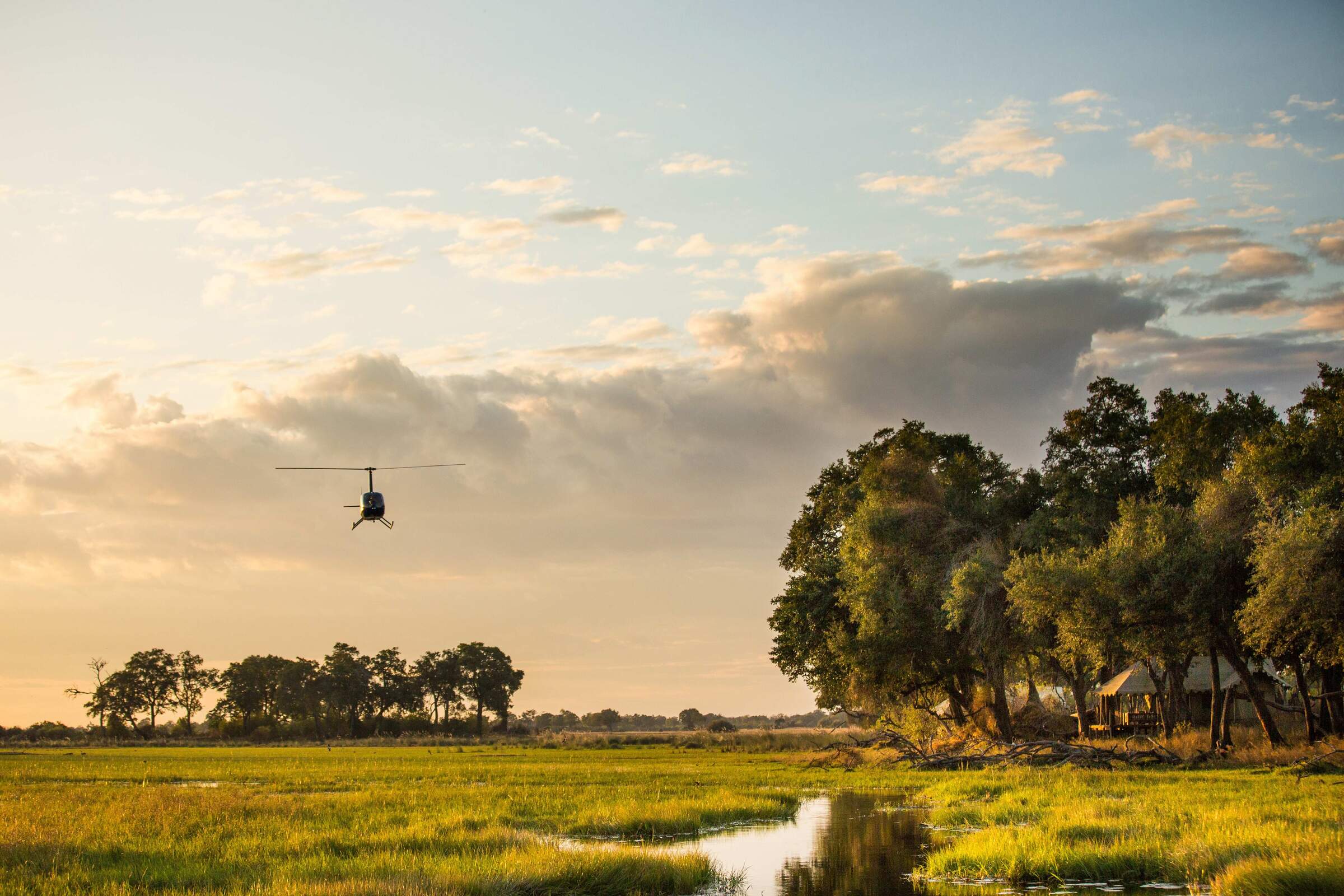
Duba Explorers Camp
Intimate and elegant, Duba Explorers Camp promises a firm safari focus in a remote corner of the Okavango, led by a team who value the highest guiding and hosting standards.
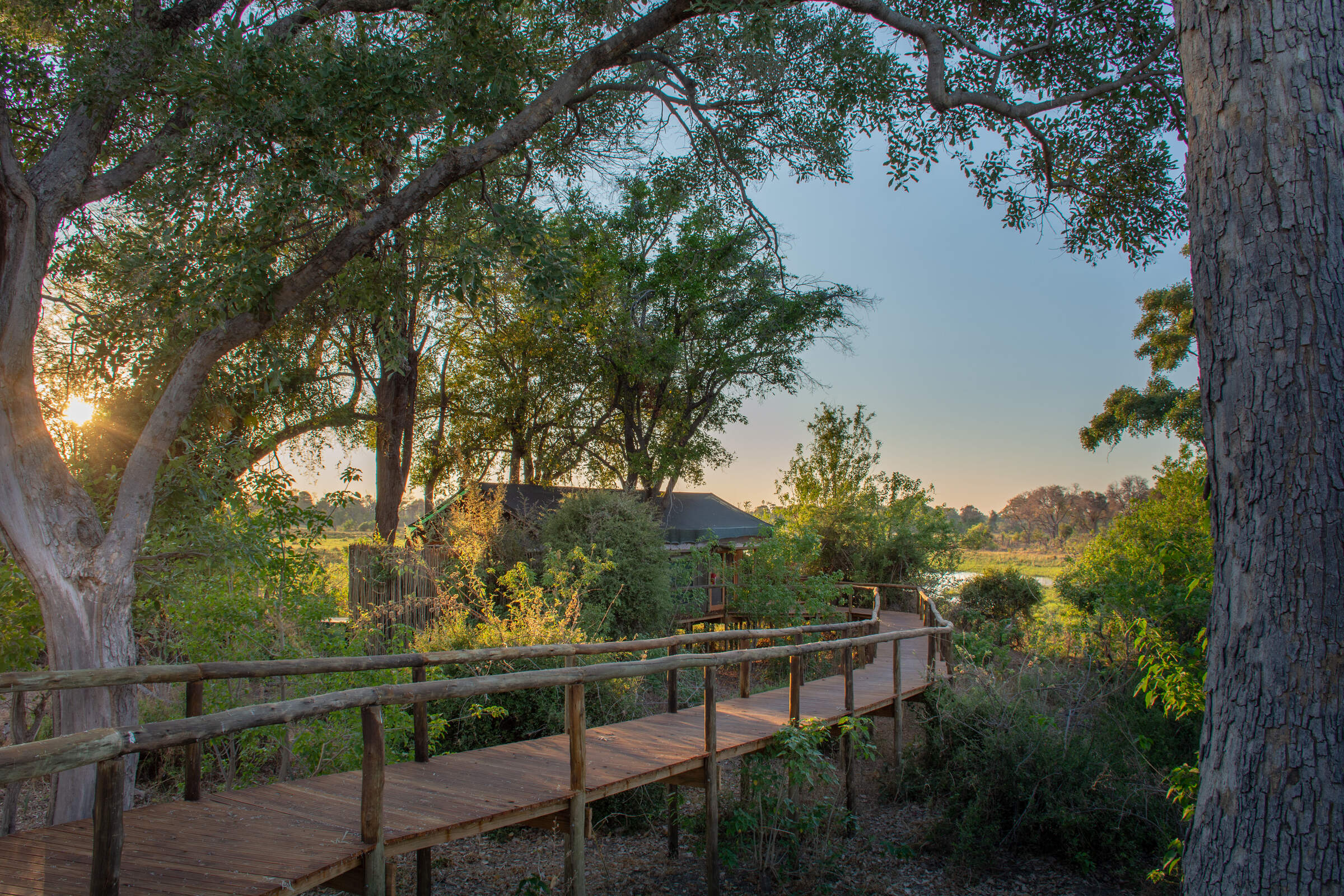
Mma Dinare
Beautifully located in a private concession overlooking the Gomoti River, the traditional Mma Dinare is very well-priced for the Okavango Delta.
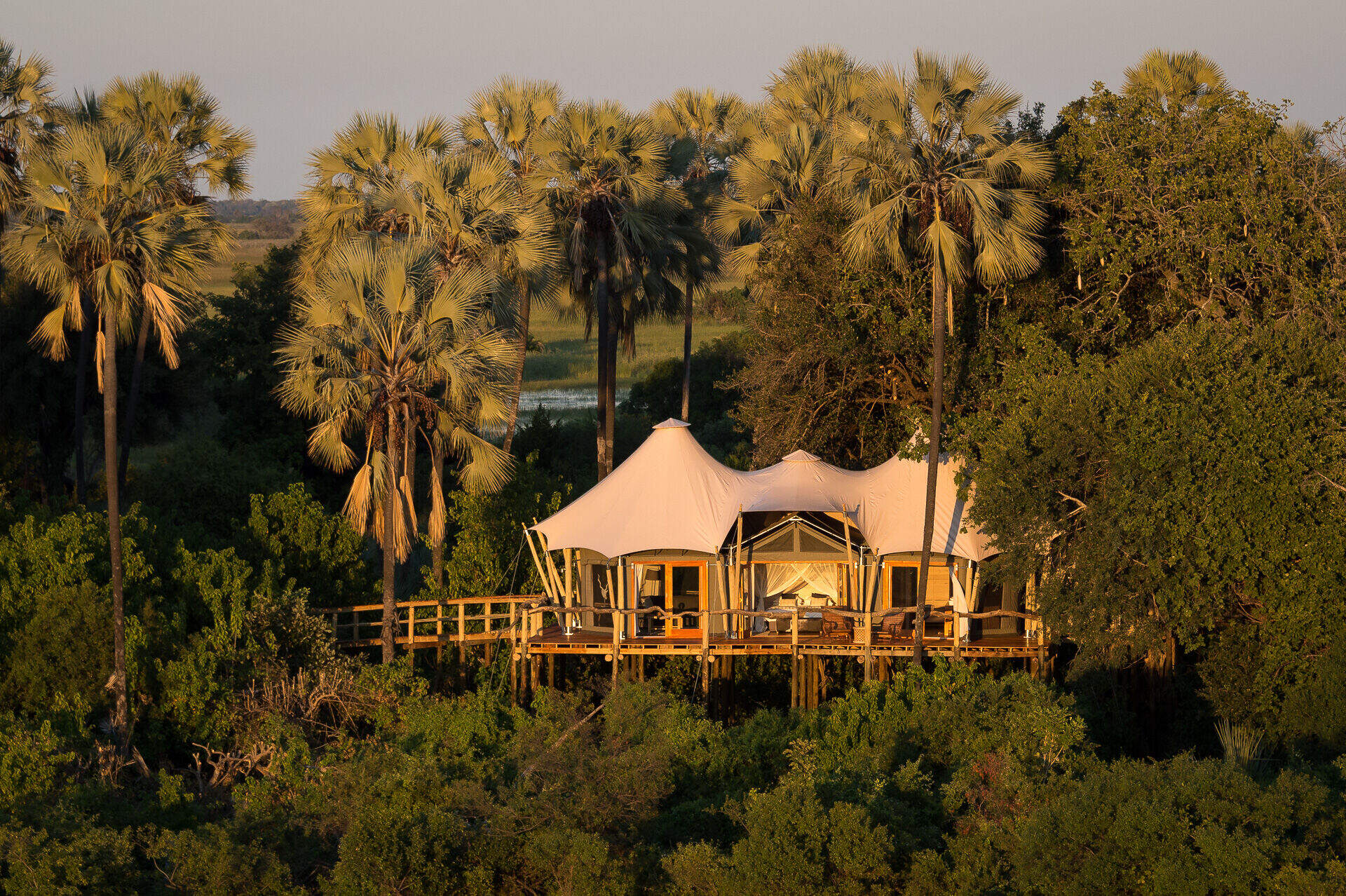
Kwetsani Camp
Deep in the Delta, overlooking a floodplain, Kwetsani Camp is a small, high-end camp with good access to areas for land and water-based activities.
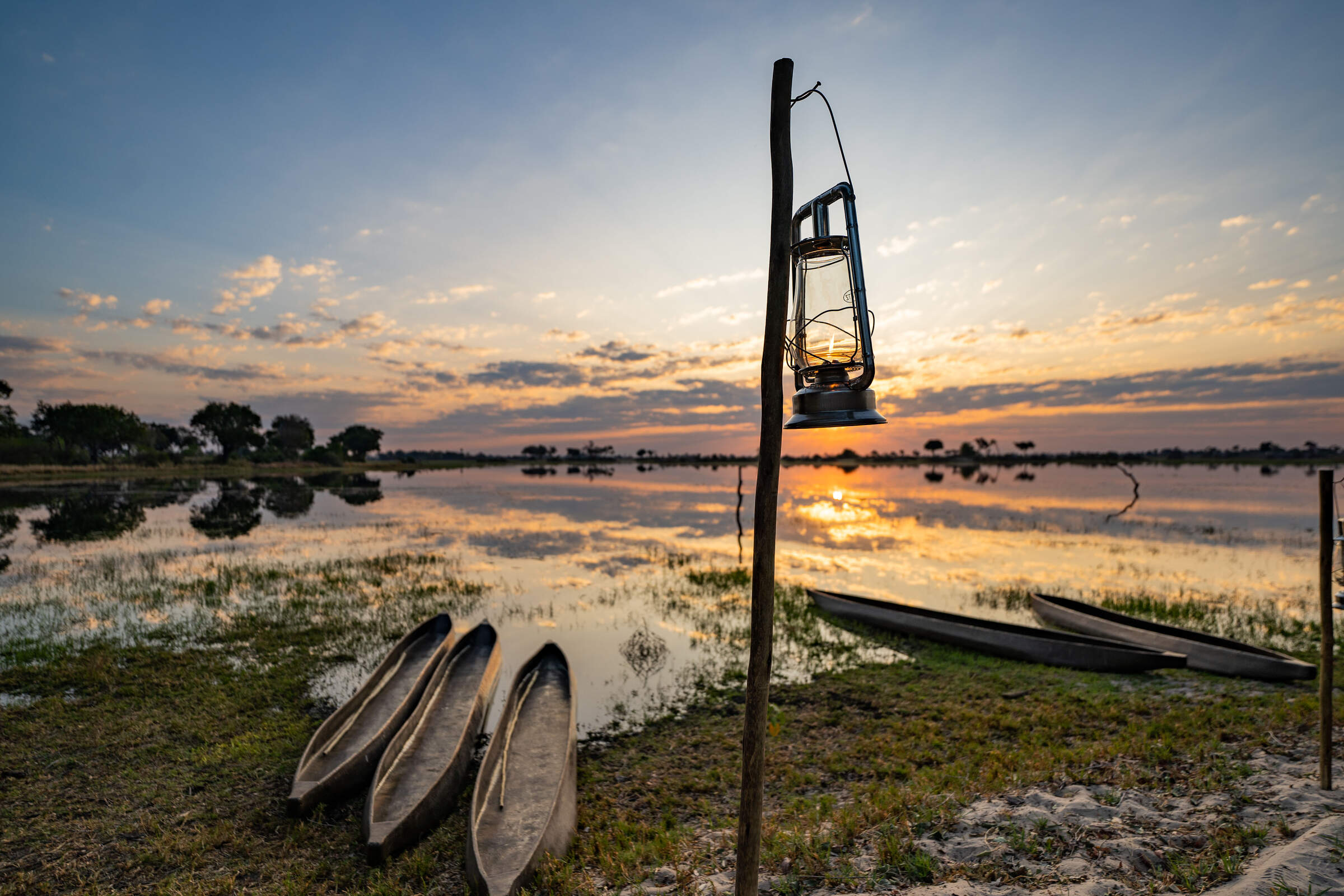
Pom Pom Camp
Amidst stunning Okavango Delta scenery, Pom Pom offers idyllic mokoro trips in season, great birdwatching, and increasingly good big-game sightings, especially leopards.
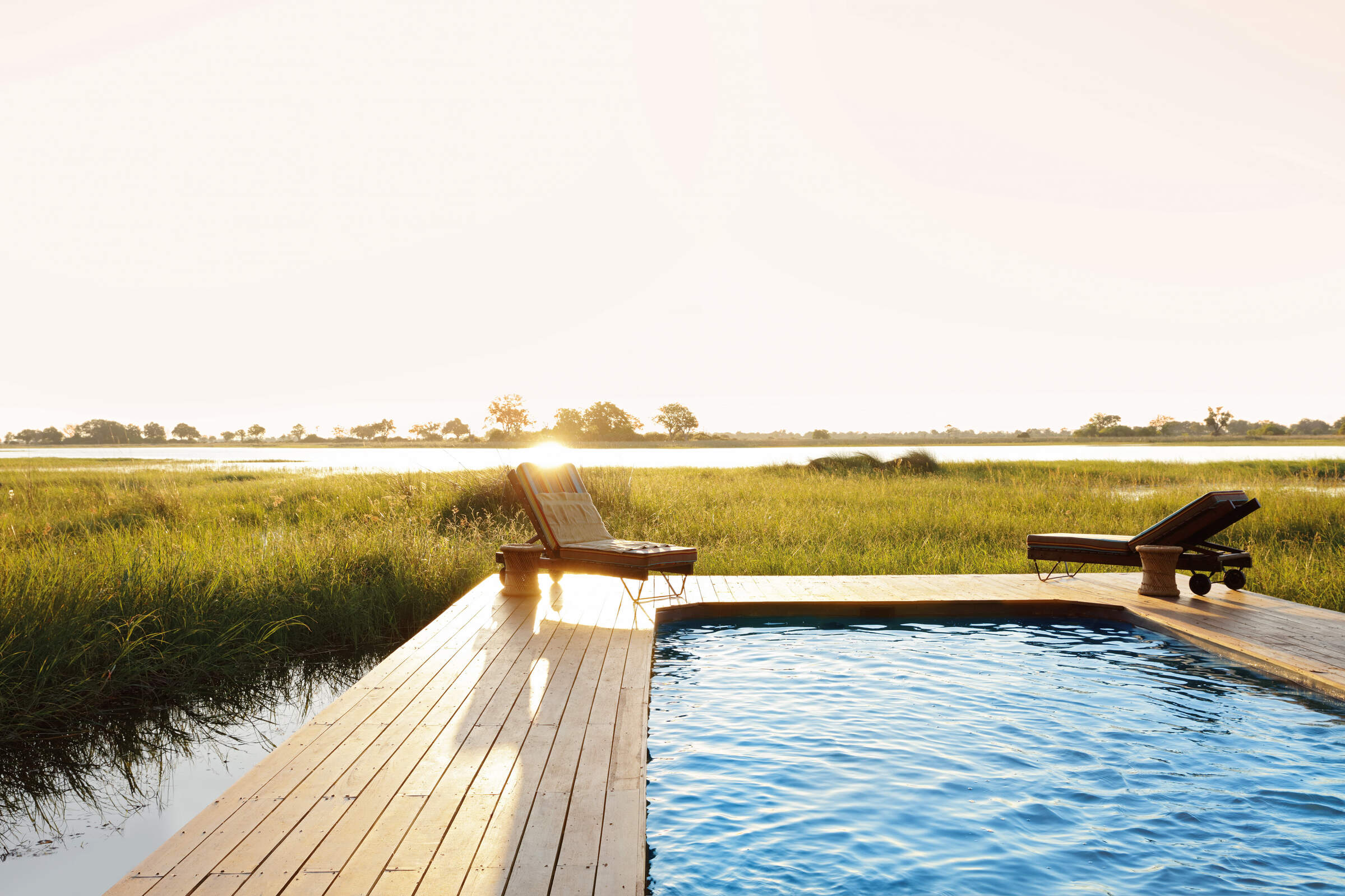
Mapula Lodge
For an affordable yet varied safari encompassing a range of eco-systems, the traditional Mapula Lodge takes a lot of beating.
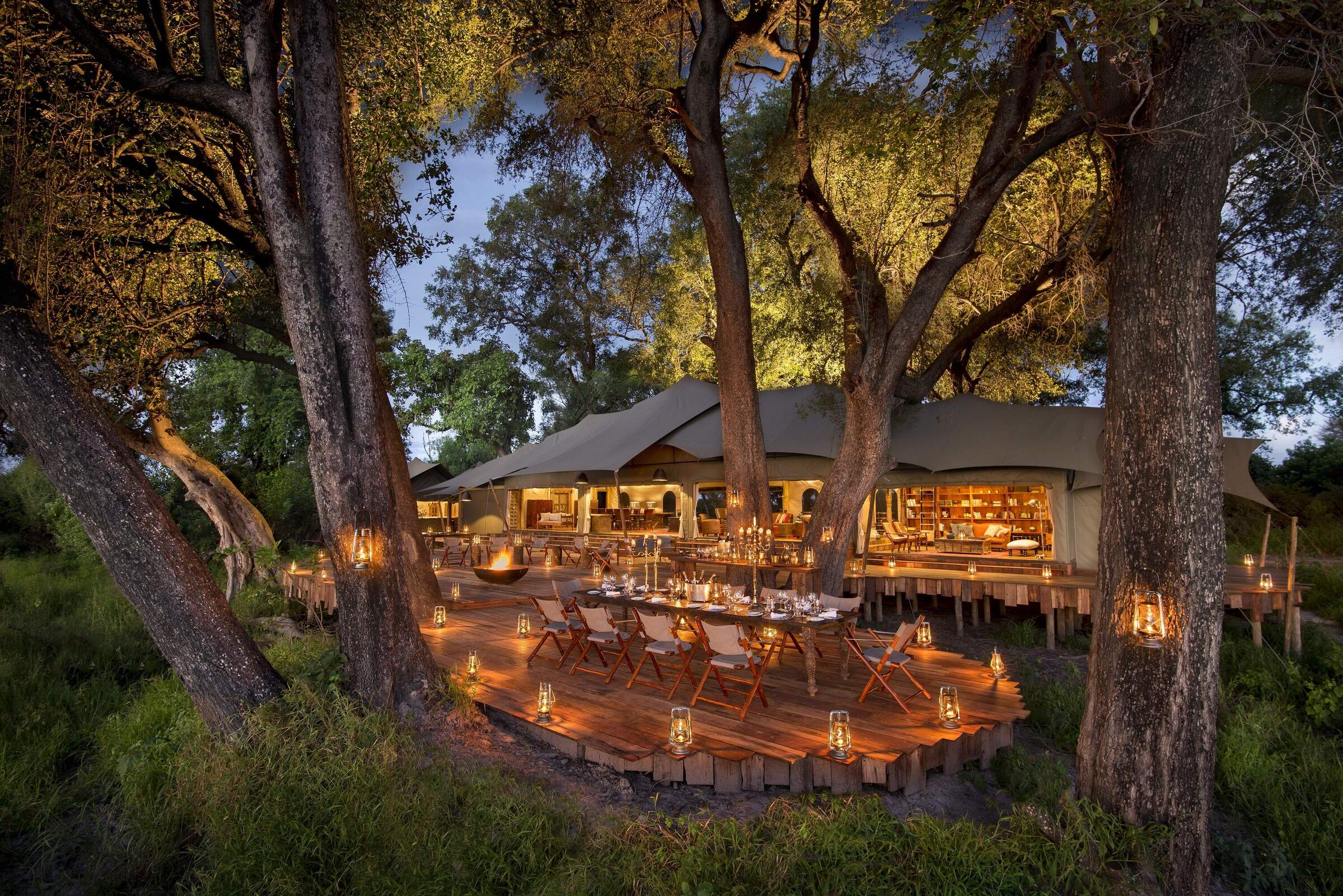
Duba Plains Camp
Duba Plains Camp is a traditional yet luxurious safari camp, best known for the thrilling lion behavior interaction that is often see during the day.
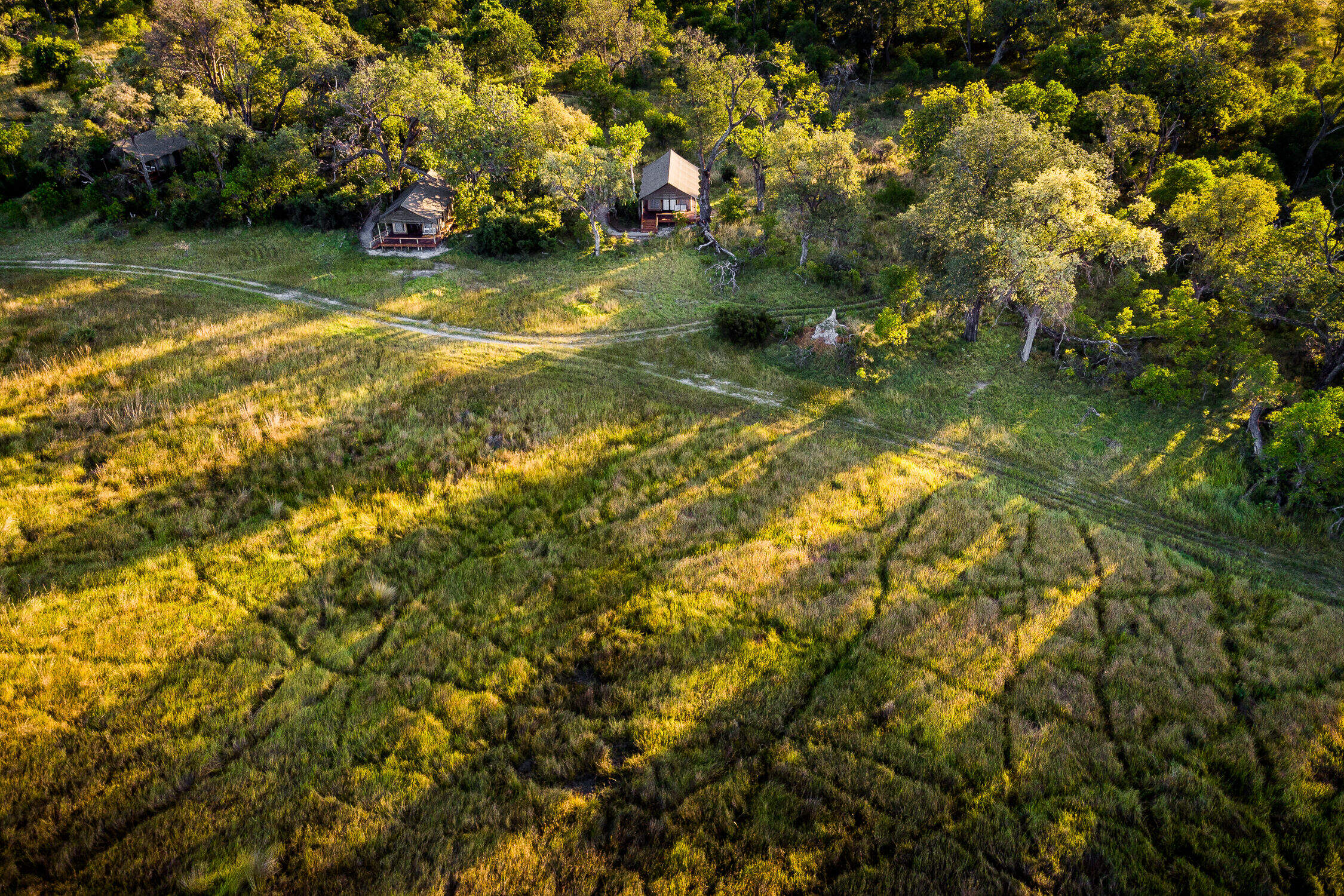
Stanley's Camp
In a private concession south of Moremi Game Reserve, Stanley's Camp offers 4WD game drives, seasonal water activities and a superb elephant interaction.
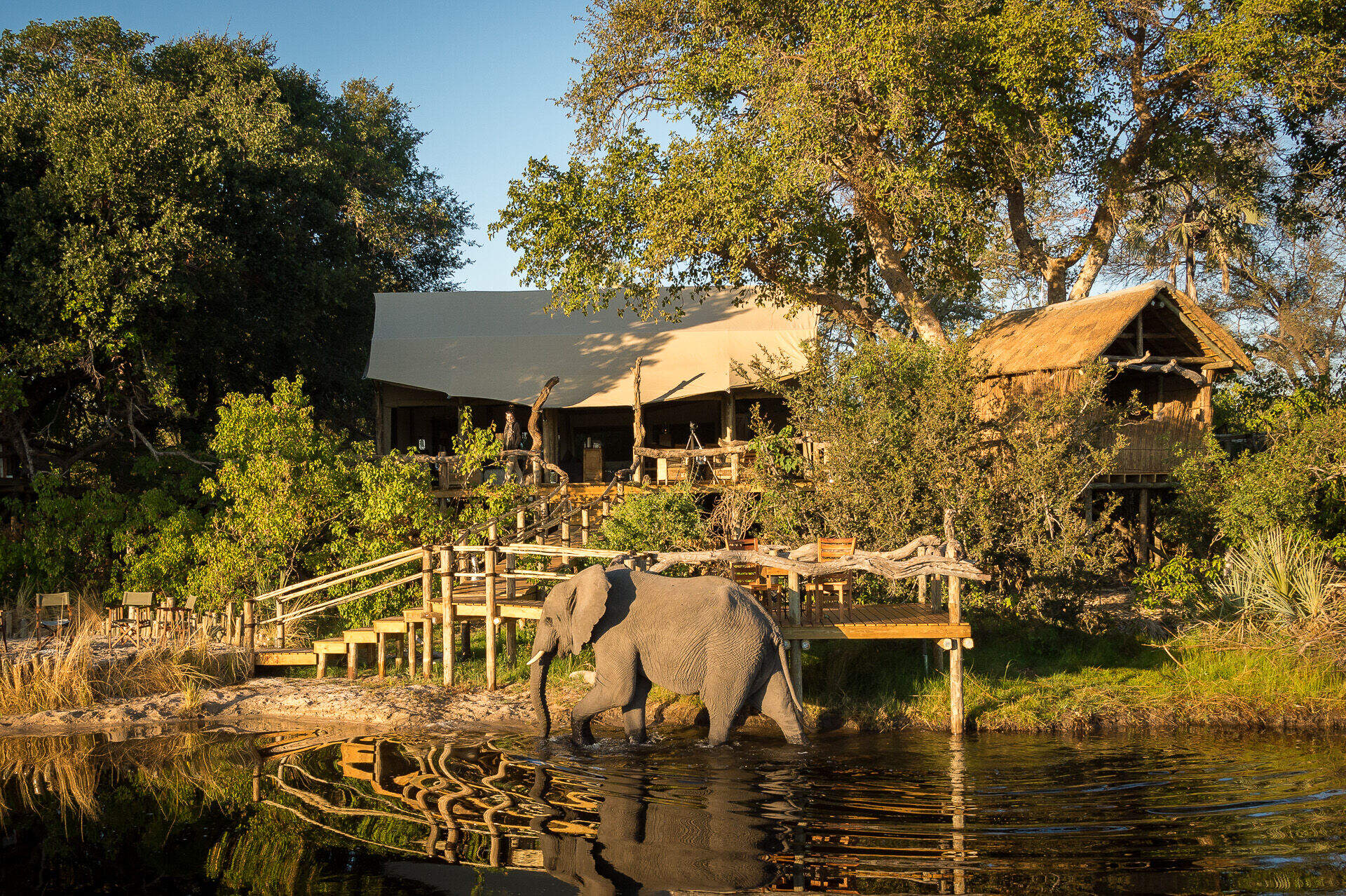
Little Tubu
Little Tubu is a new, traditional camp with just three tented chalets and a distinctive tree-house feel. The areas around it can be explored by water and land-based activities year round.
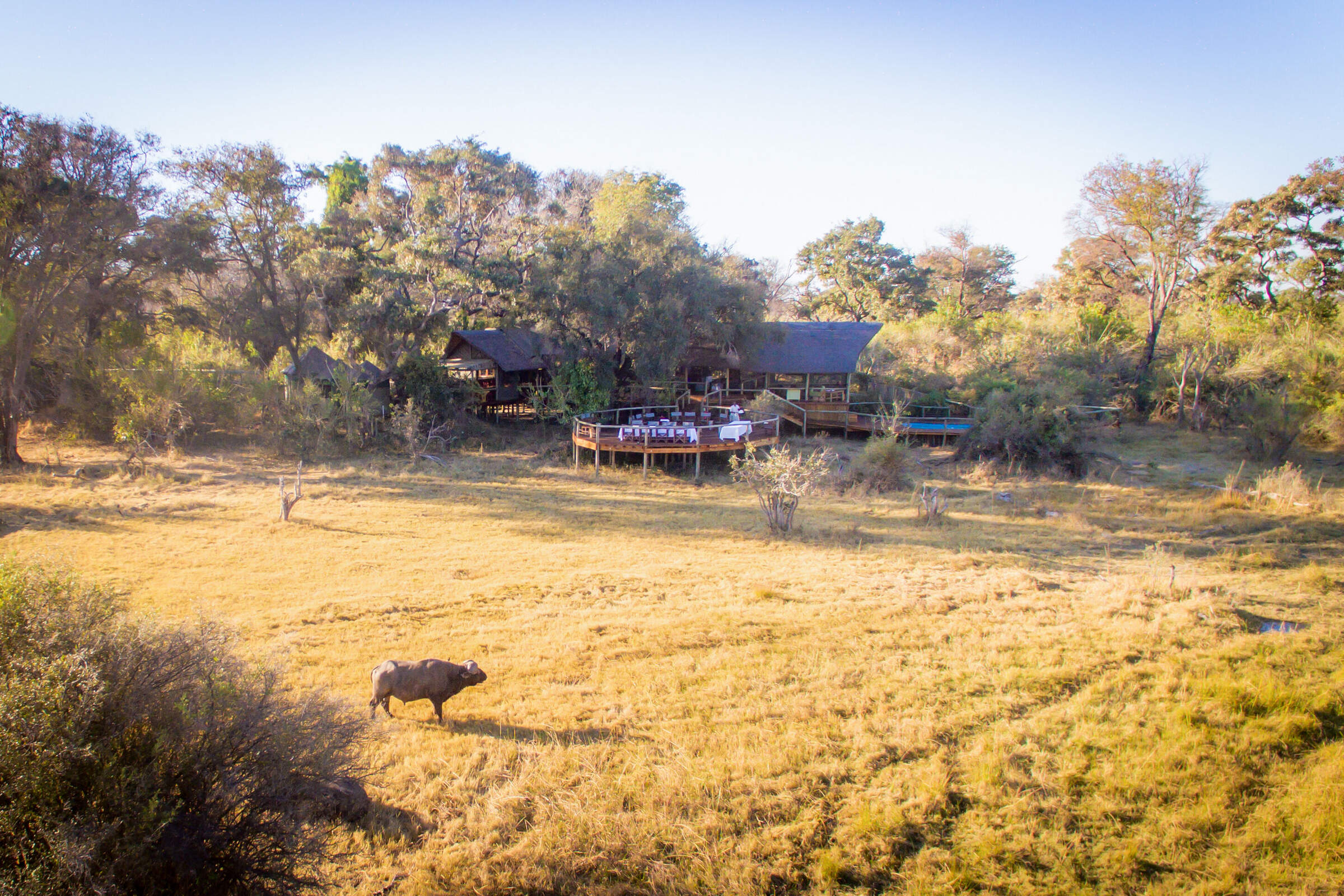
Rra Dinare
Located in a private concession in the southern reaches of the Okavango Delta, overlooking the Gomoti River, Rra Dinare is a traditional-style, well-priced camp.
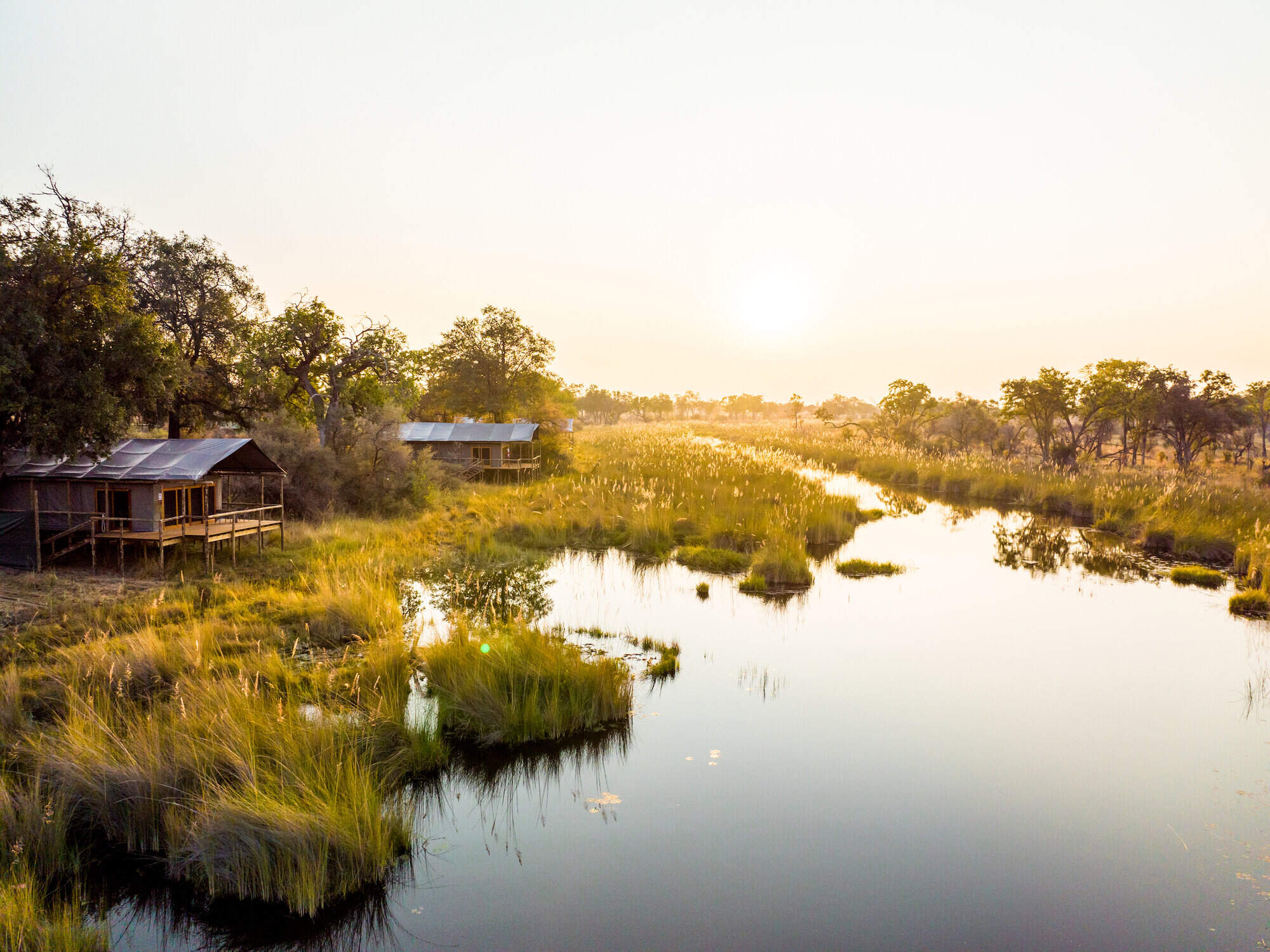
4 Rivers
4 Rivers is a new camp in a previously in accessible area of the excellent Kwara concession.
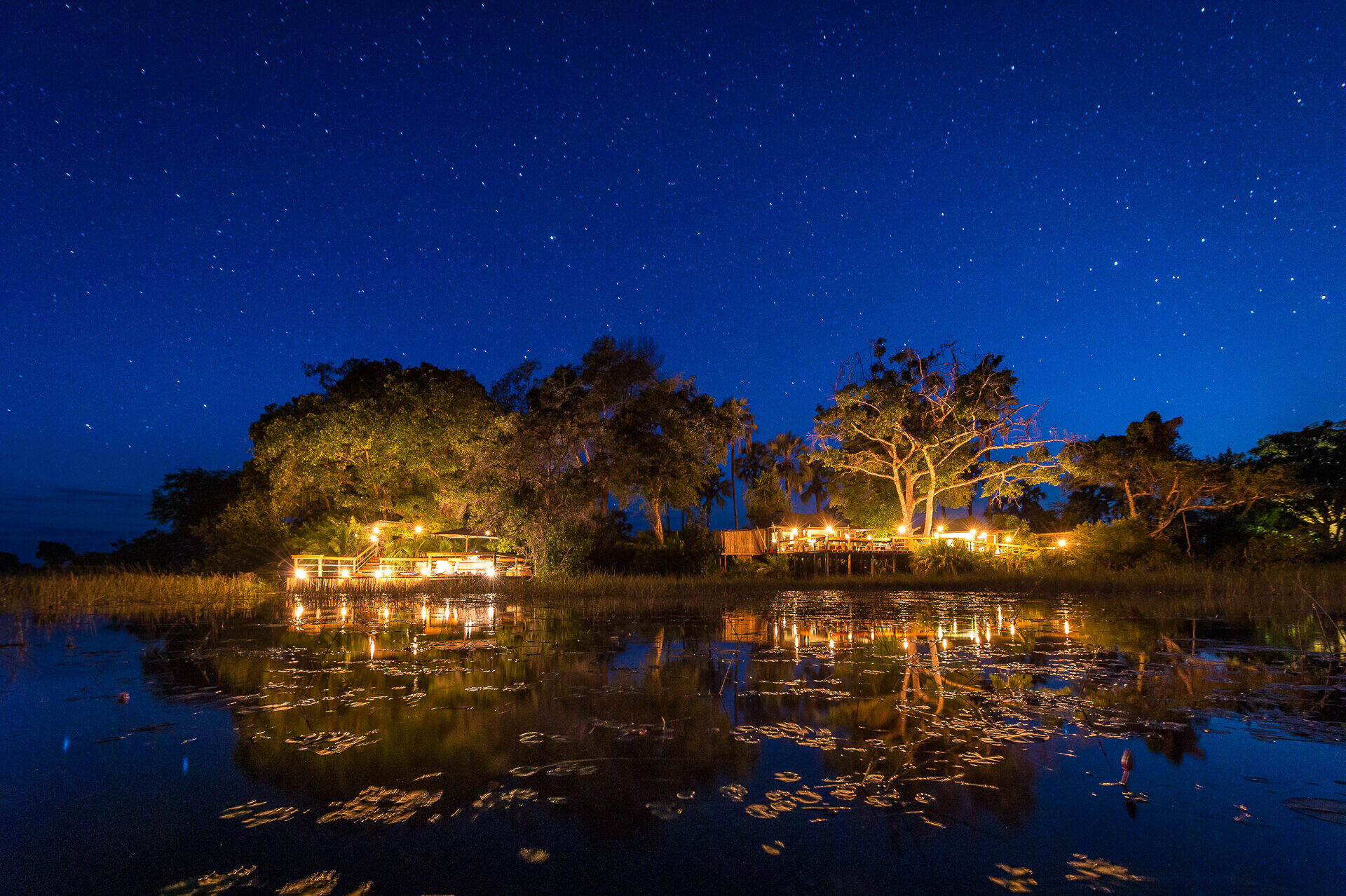
Pelo Camp
In a pristine wilderness environment deep in the Okavango Delta, the seasonal Pelo Camp is tented yet comfortable, with activities focusing on excursions by mokoro.
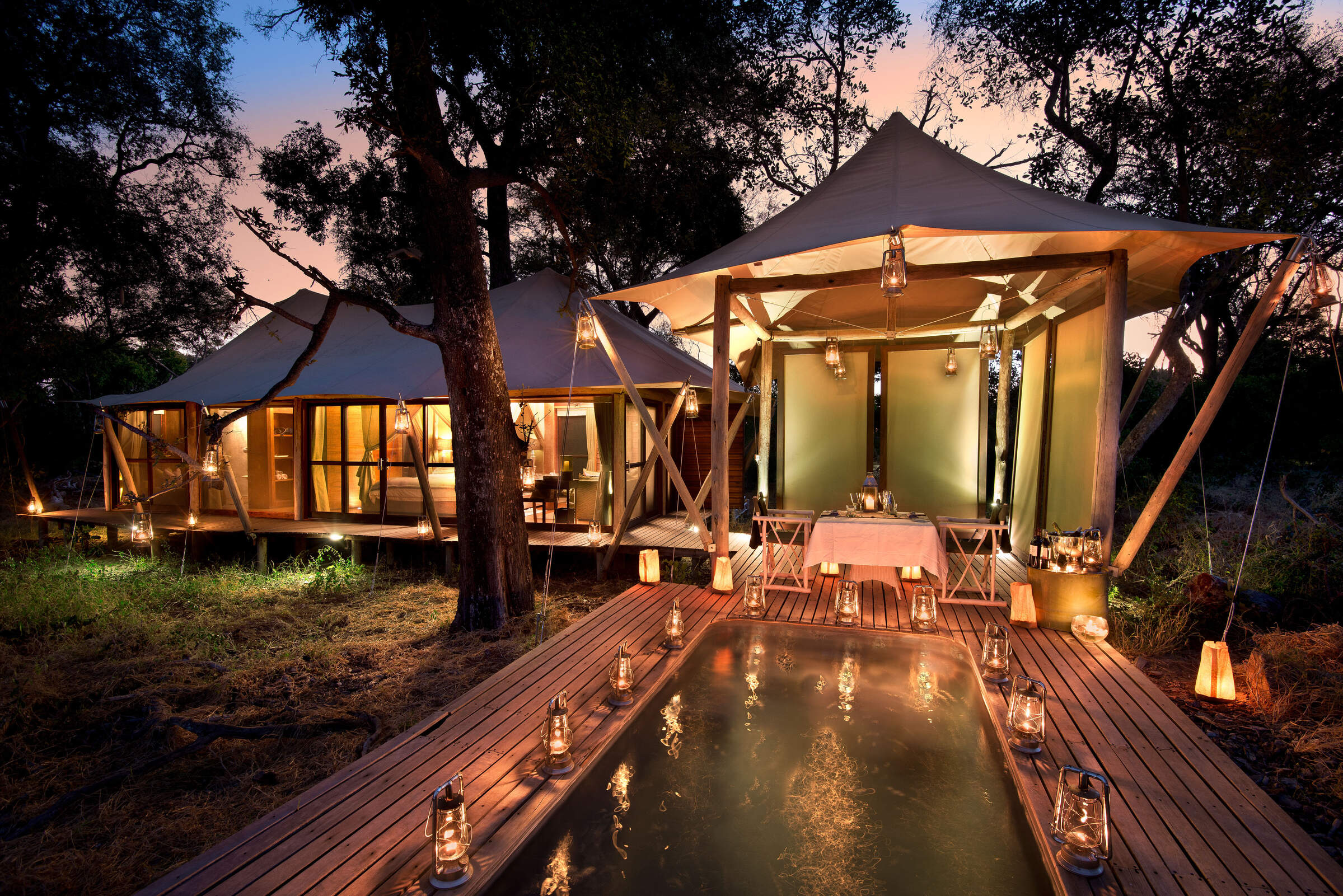
Xaranna
Xaranna is a plush tented camp amongst the idyllic waterways and islands of the Delta. Each air-conditioned tent has a plunge pool. Water activities and pampering are the focus here.
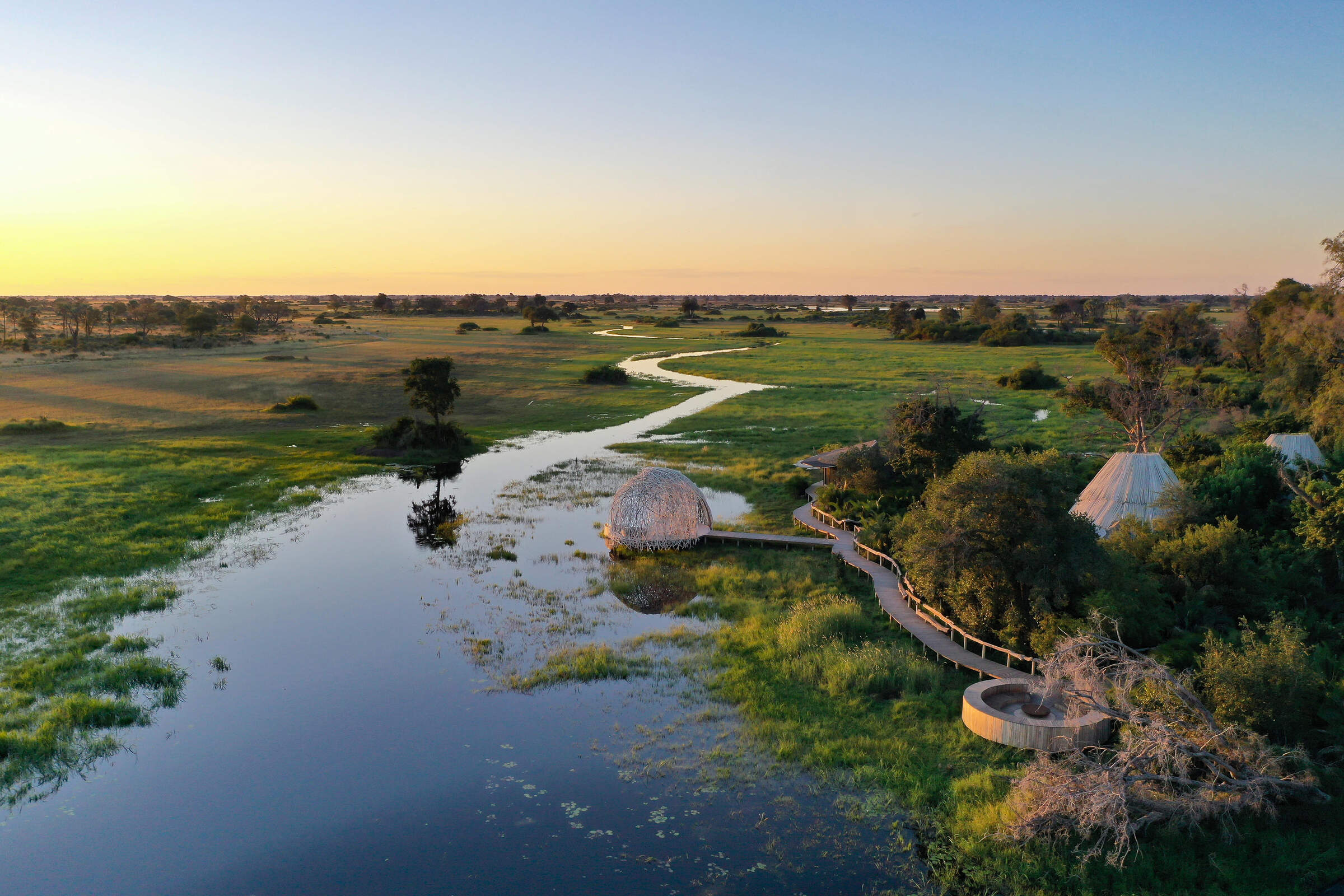
Jao Camp
In a beautiful area with fantastic water activities, Jao combines an idyllic location with high levels of luxury and service, and a top-end spa.
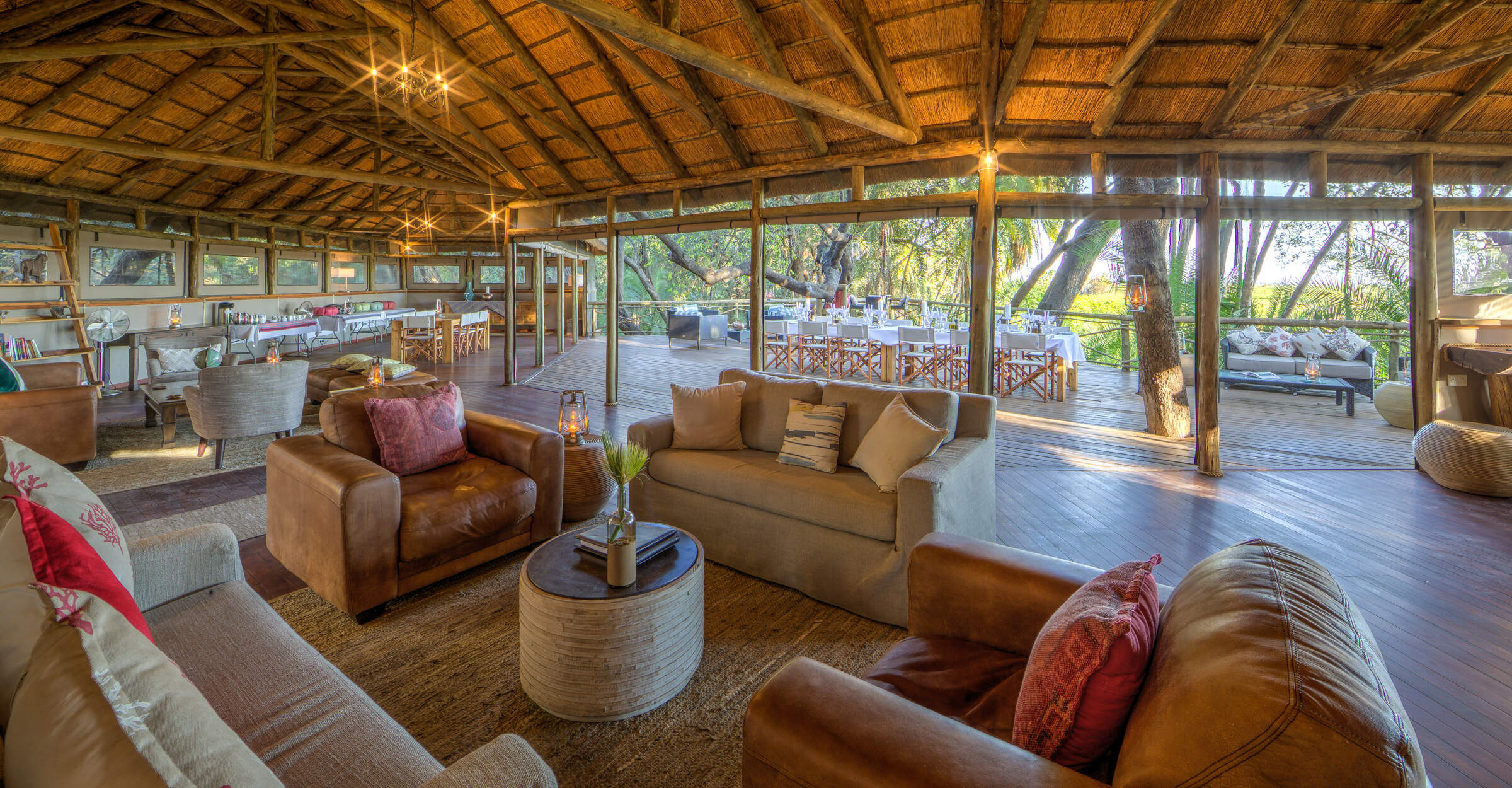
Setari Camp
Setari Camp stands on an island dotted with palm trees, close to the base of the Okavango's 'Panhandle", offering primarily water-based activities.
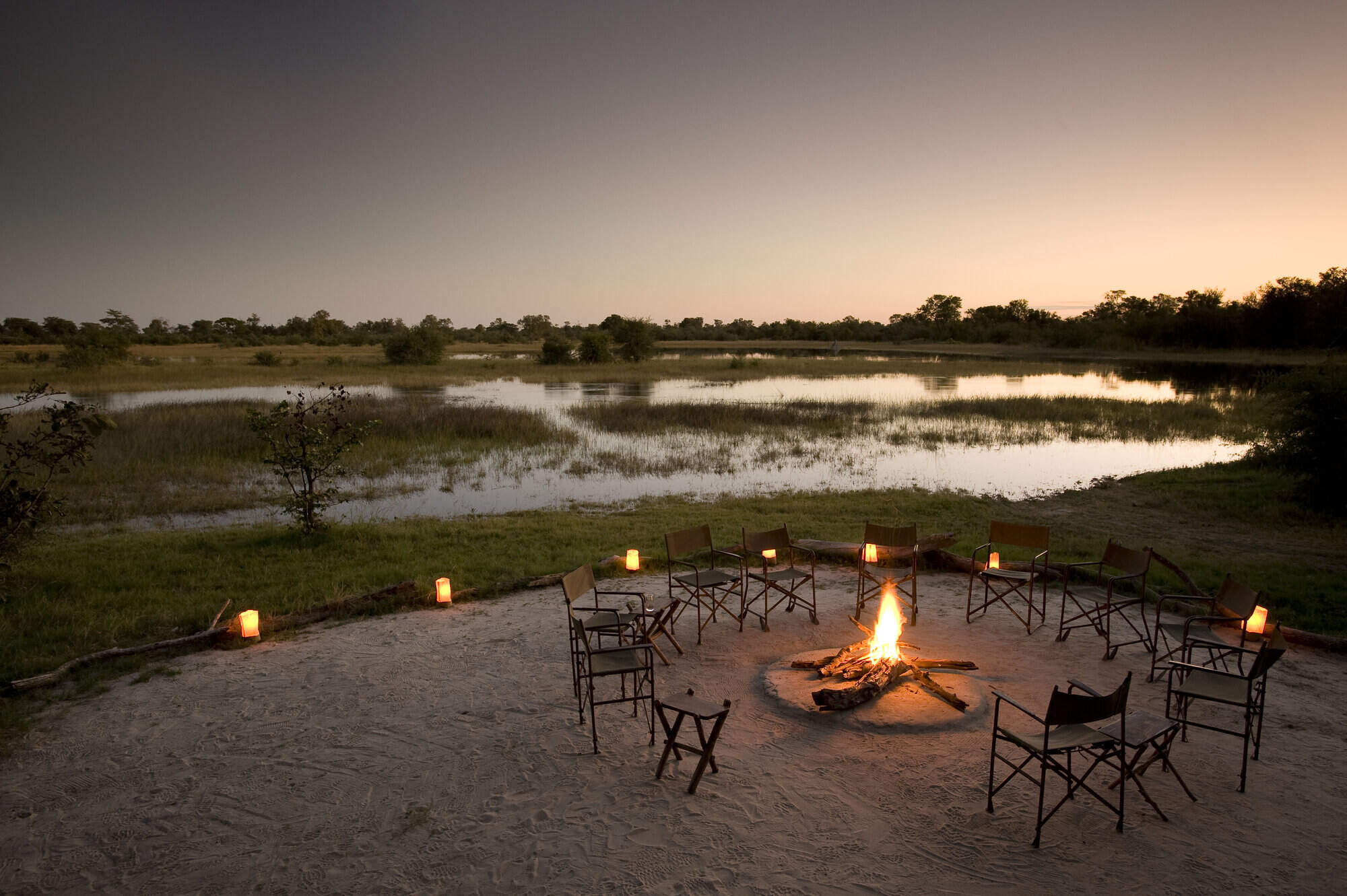
Okavango Explorers
The traditional, tented Okavango Explorers Camp offers a mix of walking, canoeing and game drives led by great guides in a wildlife-rich area.
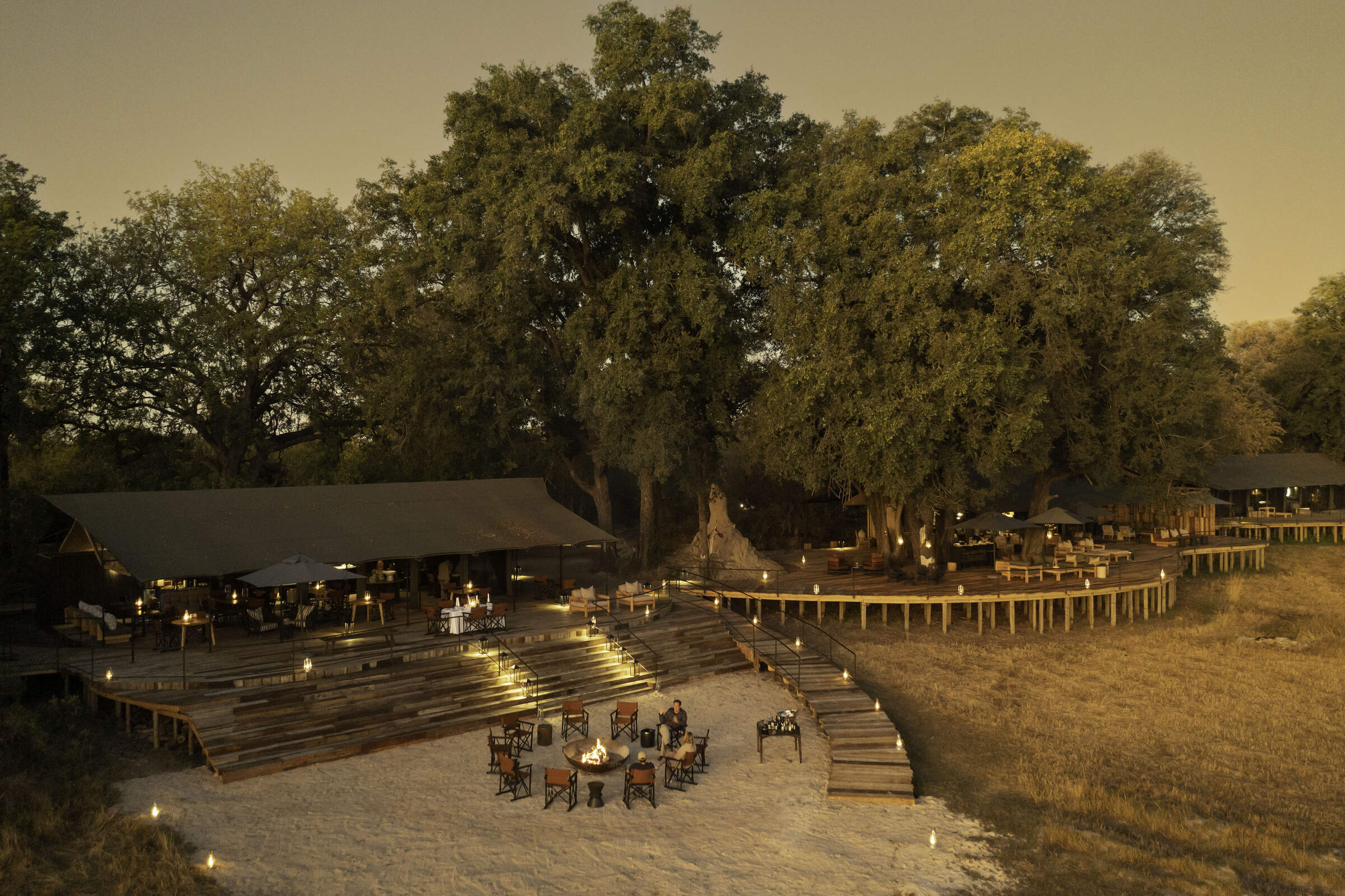
Kiri Camp
Kiri Camp is the latest Okavango offering from the excellent team behind Machaba. In an exciting new location in the heart of the Delta we cannot wait to visit this new camp.
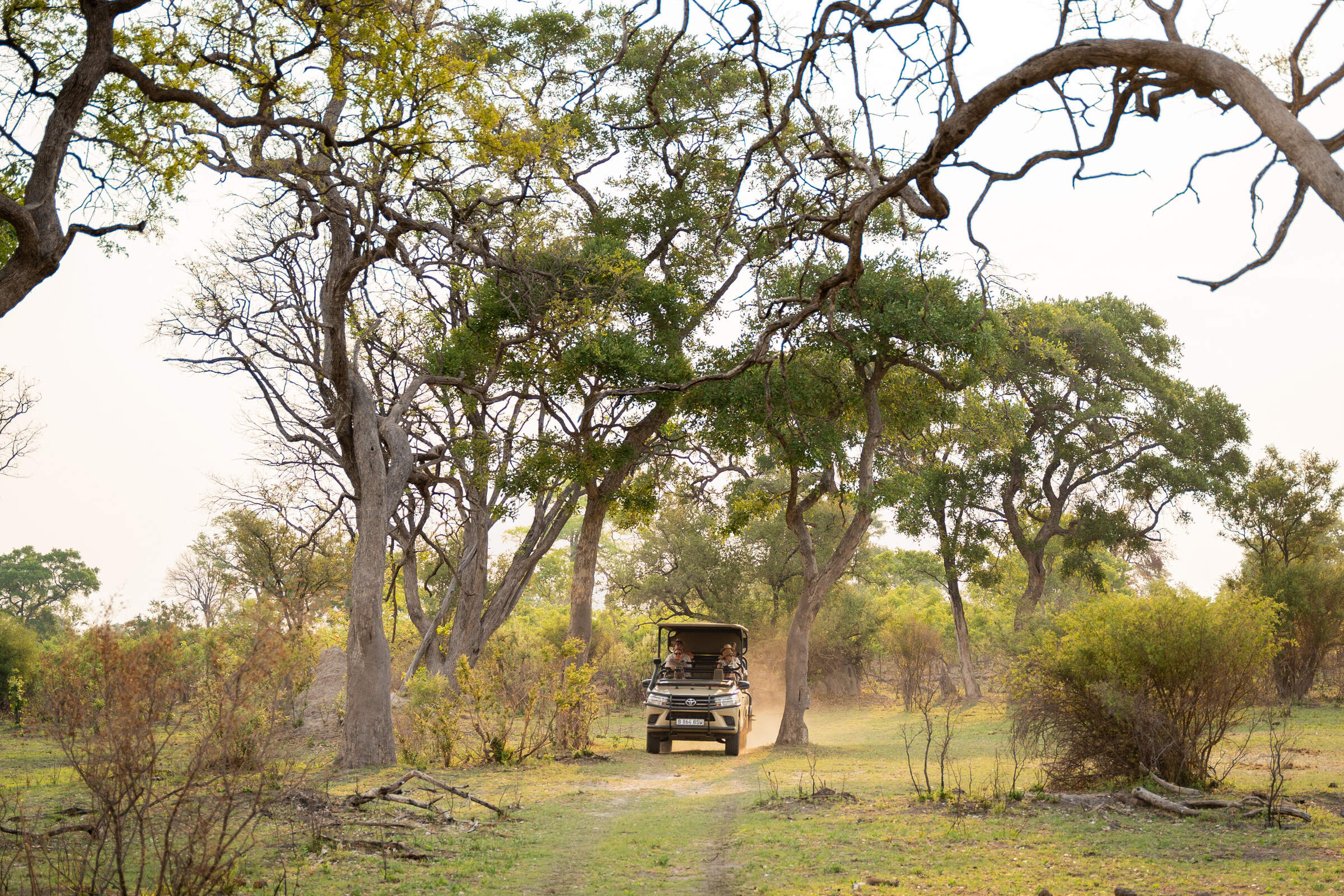
Karangoma
New for 2024, Karangoma is a classic, tented camp offering walking, canoeing and game drives, in partnership with the local Bukakwe San clan.
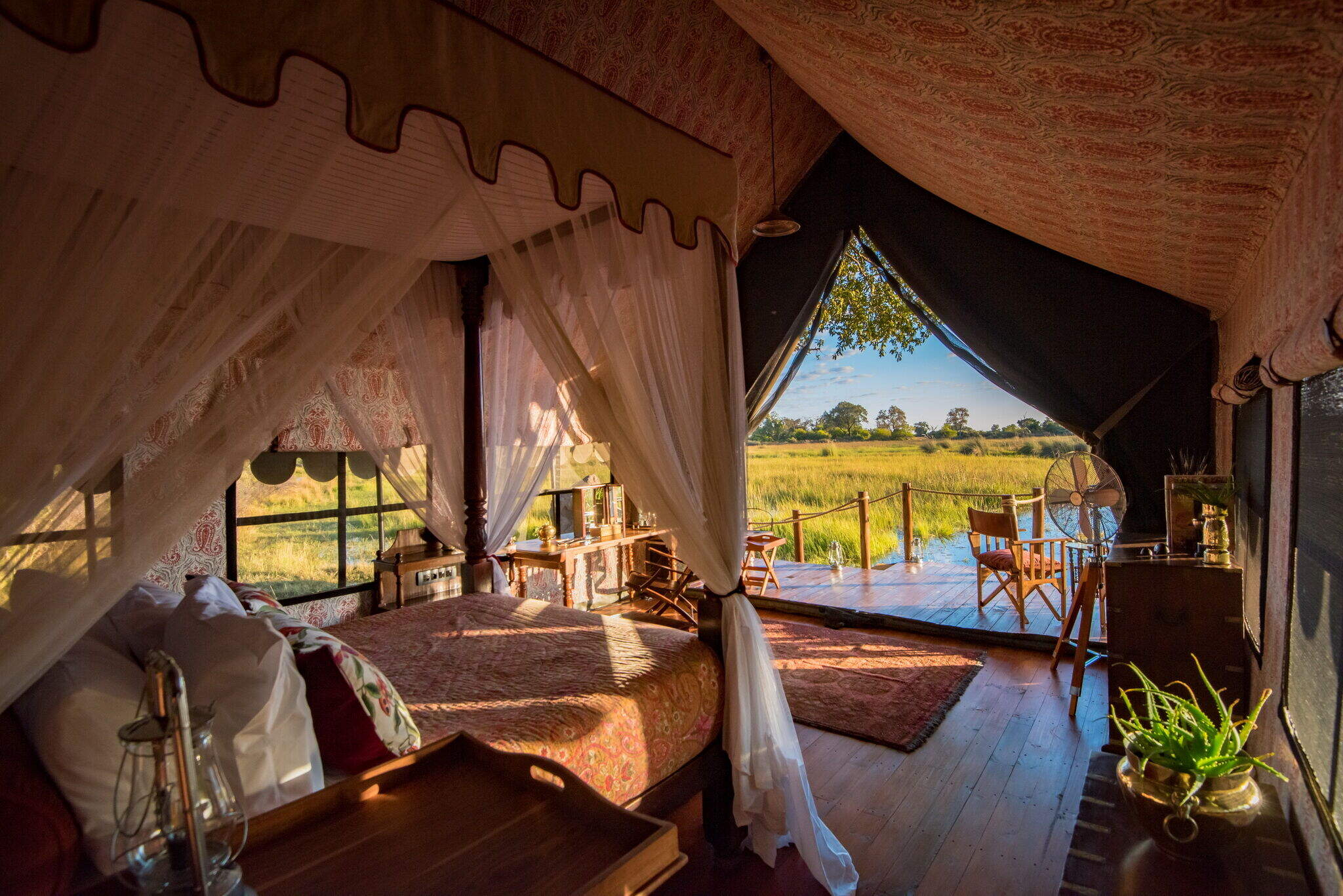
Duke’s Camp
On a remote island within a large concession, the romantic Duke's Camp and smaller Duke’s East are nestled among mature trees overlooking wildlife-rich plains and waterways of the Okavango.
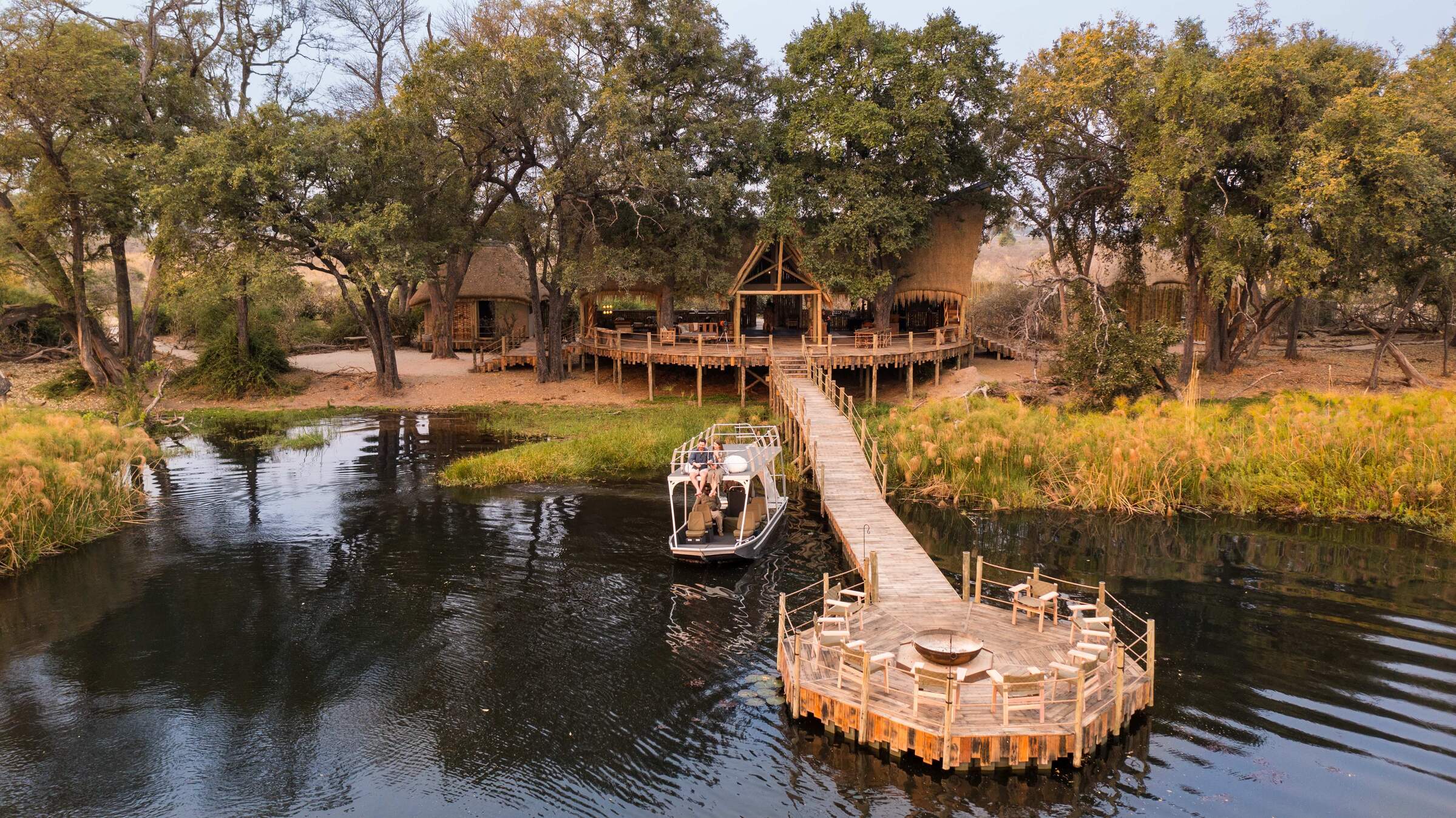
Sitatunga Island Camp
Tucked away in a pristine corner of the Okavango Delta, the exclusive Sitatunga Private Island is a water-based camp offering boating, mokoro trips and fishing.
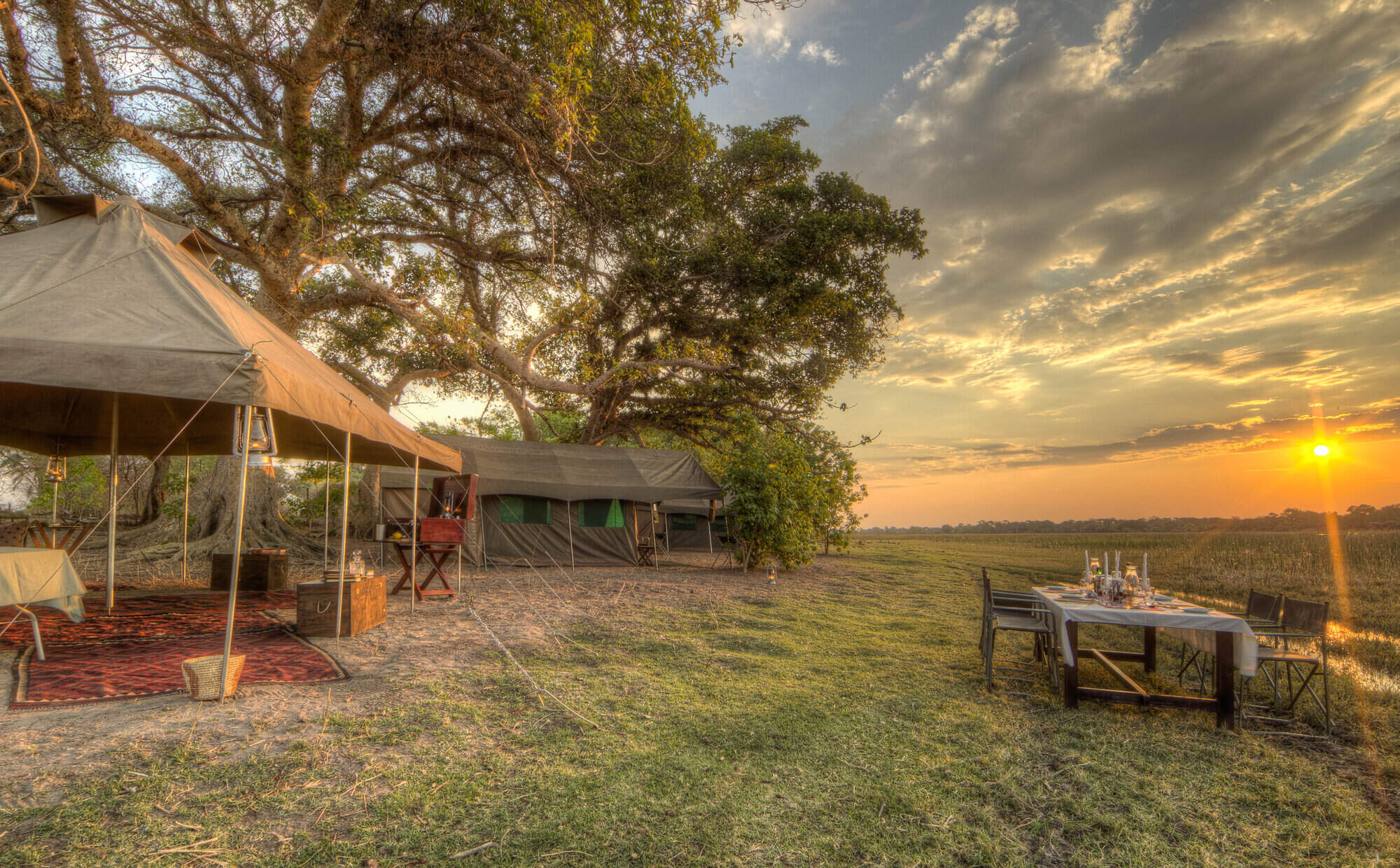
Okavango Walking Safari
The Okavango Delta Walking Safari camps in a secluded Okavango Delta Reserve where there are few roads; the ideal location for a walking trail led by an expert guide.
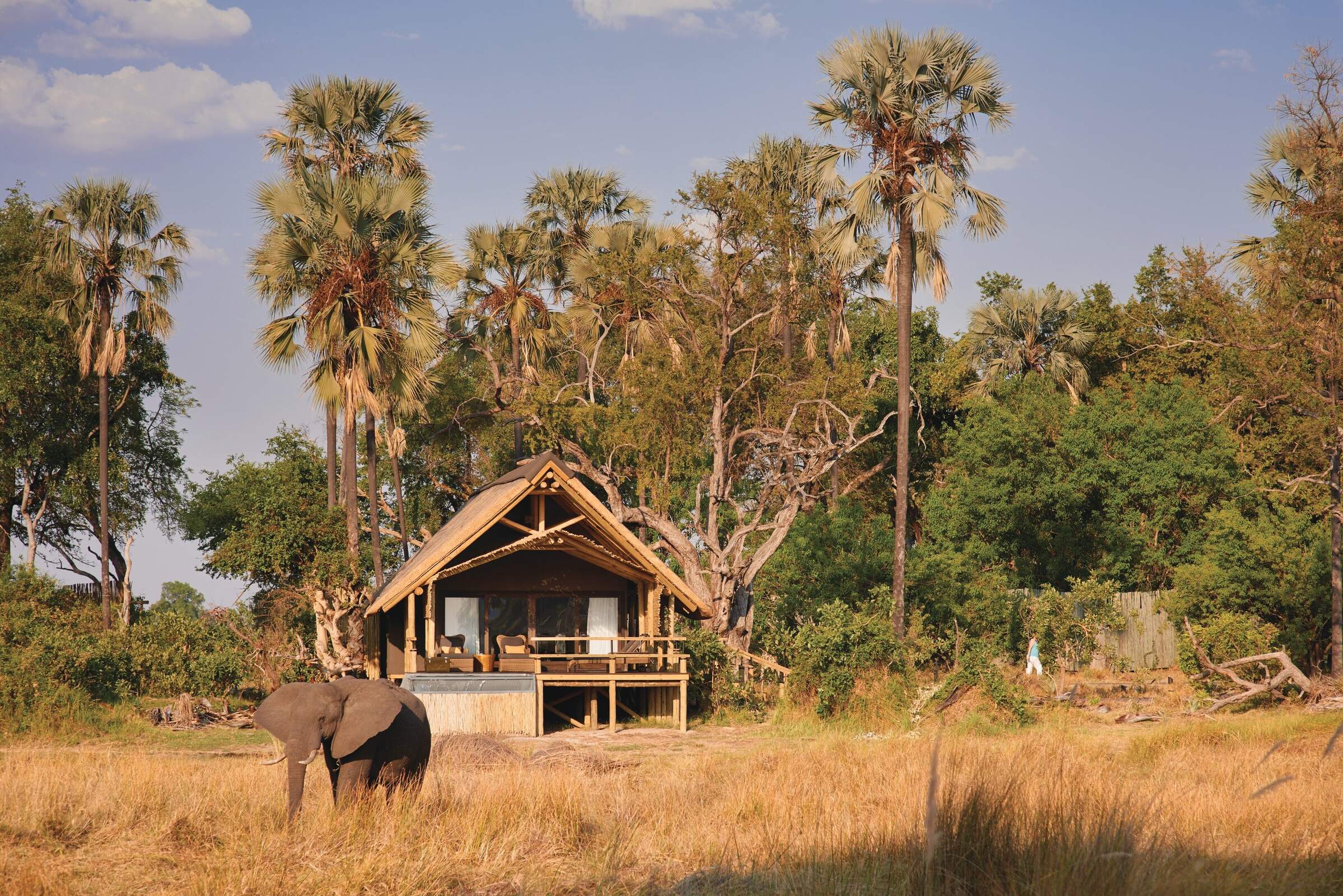
Eagle Island Lodge
Eagle Island Lodge is a luxurious camp with international-style facilities including air conditioning and intercom in each room; offering water based activities in the Okavango Delta.
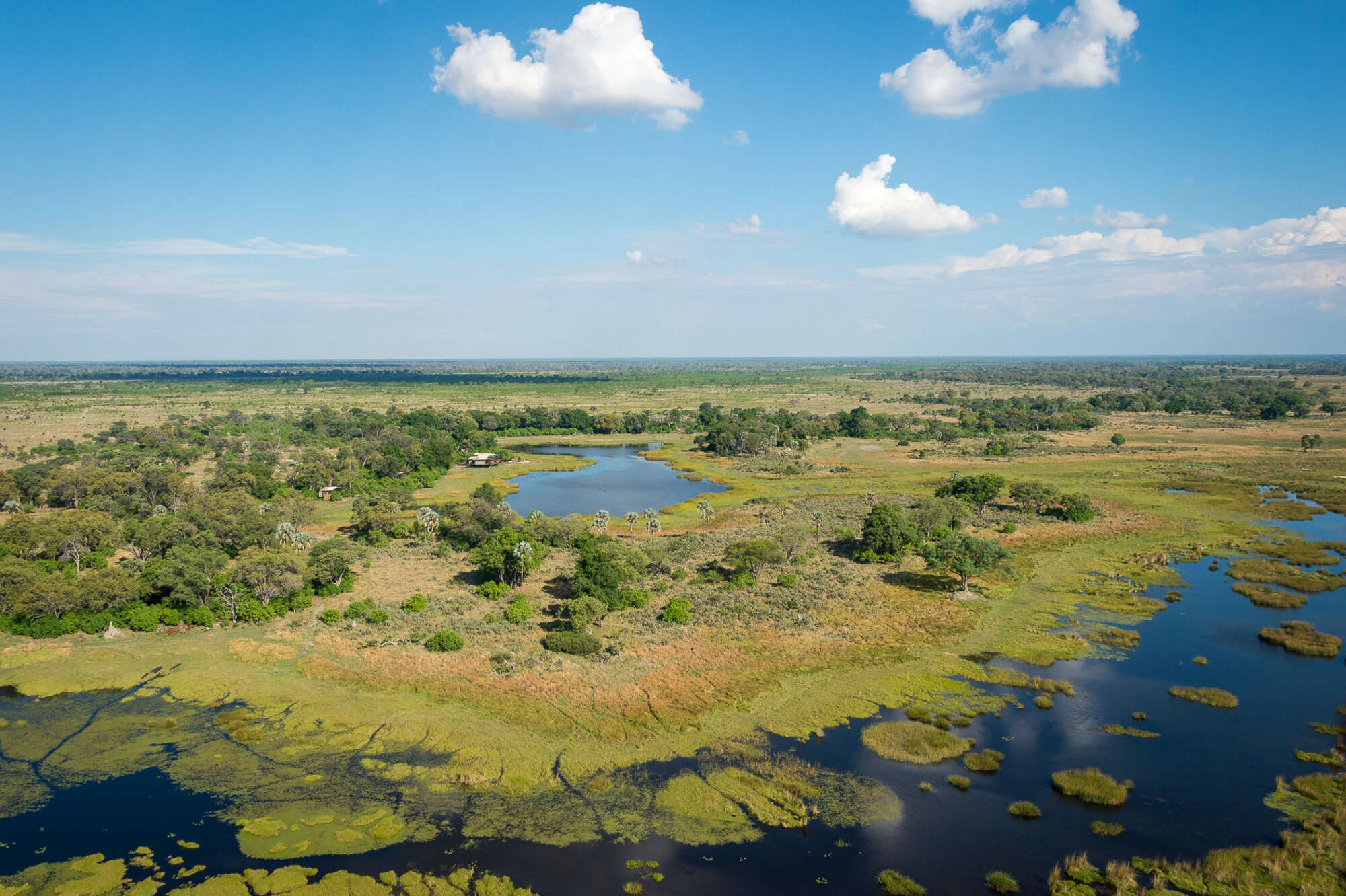
Qorokwe Camp
Luxurious and contemporary, the relatively new Qorokwe Camp is a gem in the Okavango Delta, offering land- and occasionally water-based activities in a prime wildlife area.
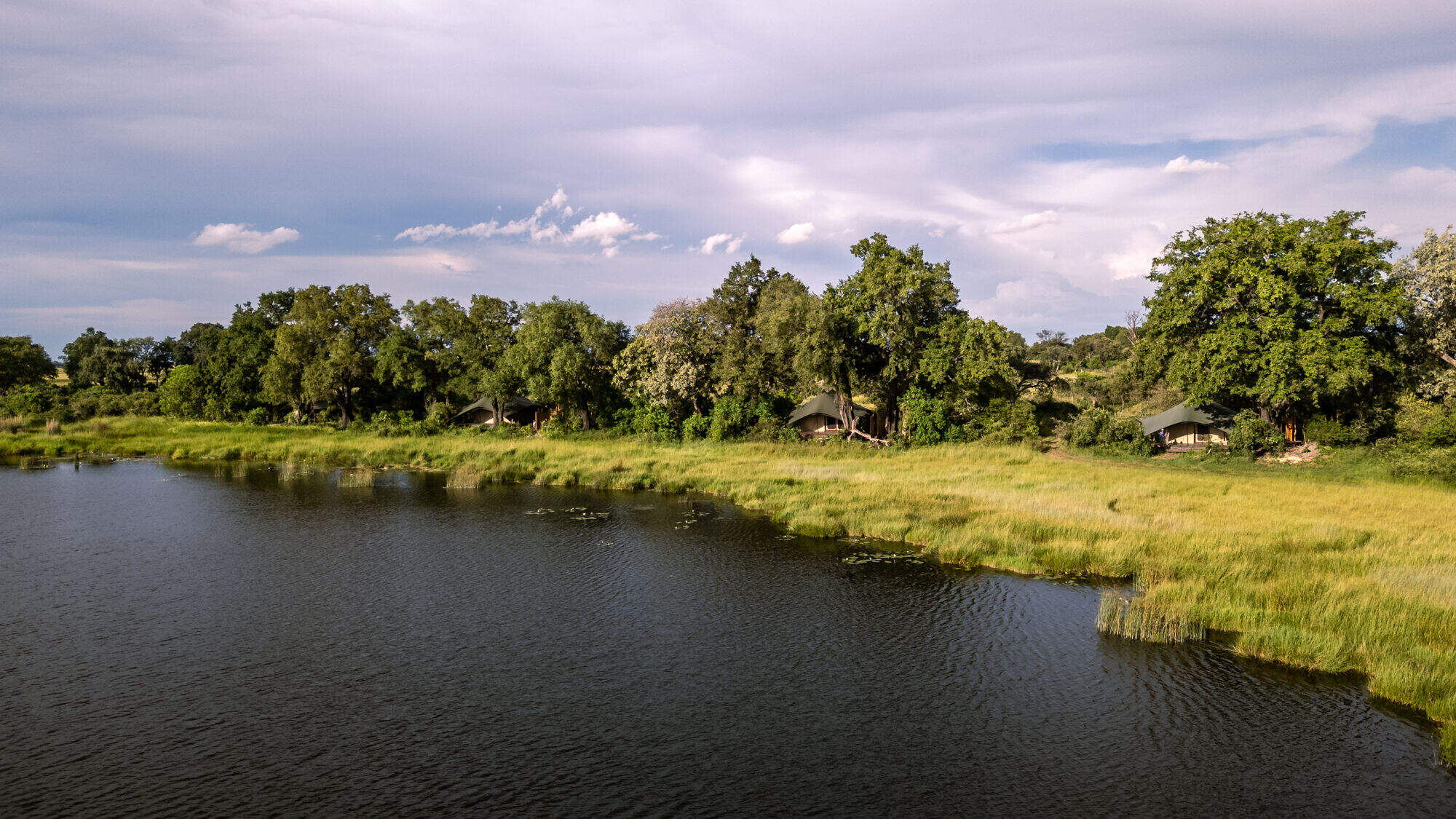
Maxa
Overlooking the permanent Maxa Lagoon, Maxa has a range of activities on offer, combining understated luxury with comfort in a remote location.
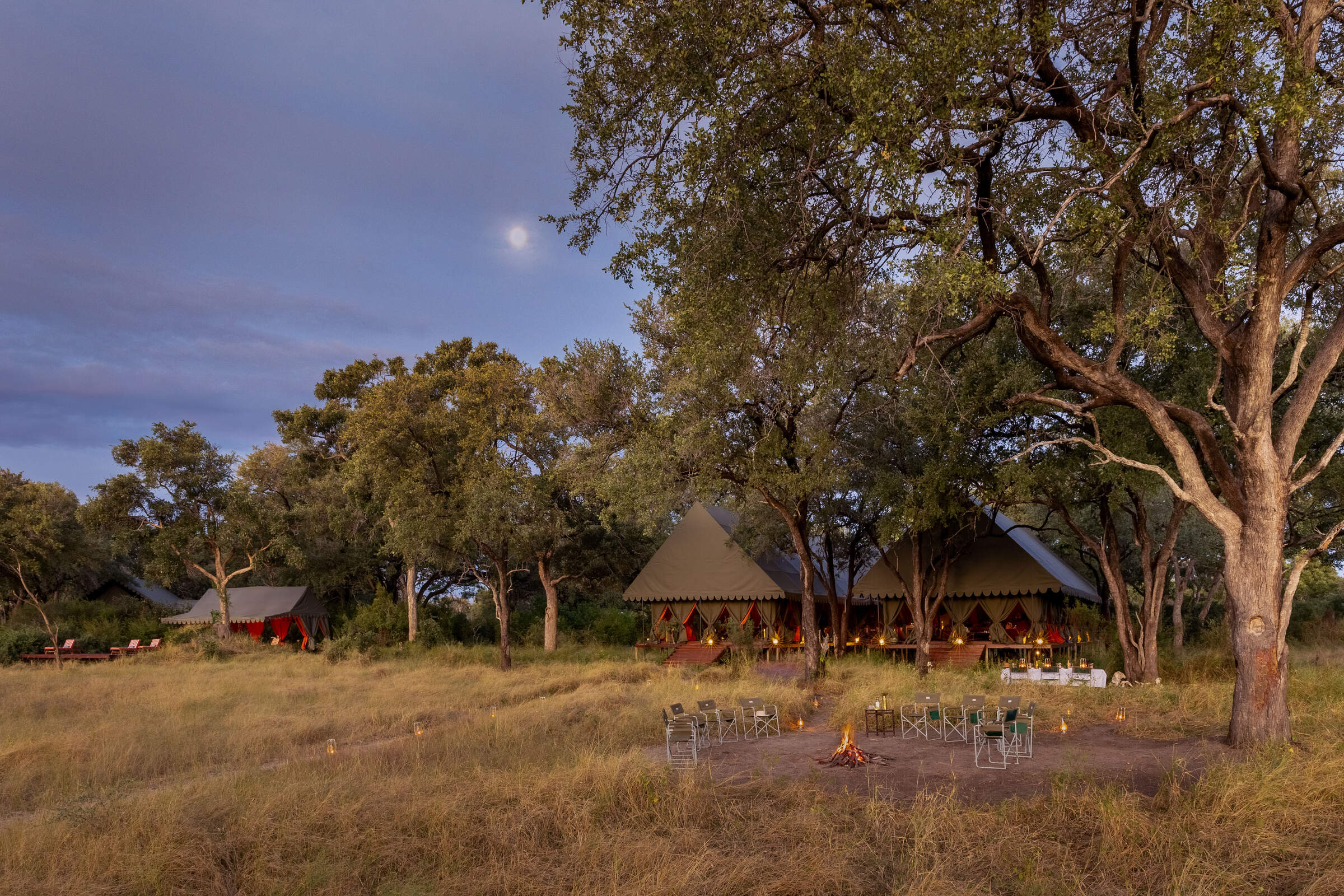
Mbamba
Deep within the northern Okavango, the classically styled Mbamba is located in the same wildlife-rich private concession as its sister camp Dukes.
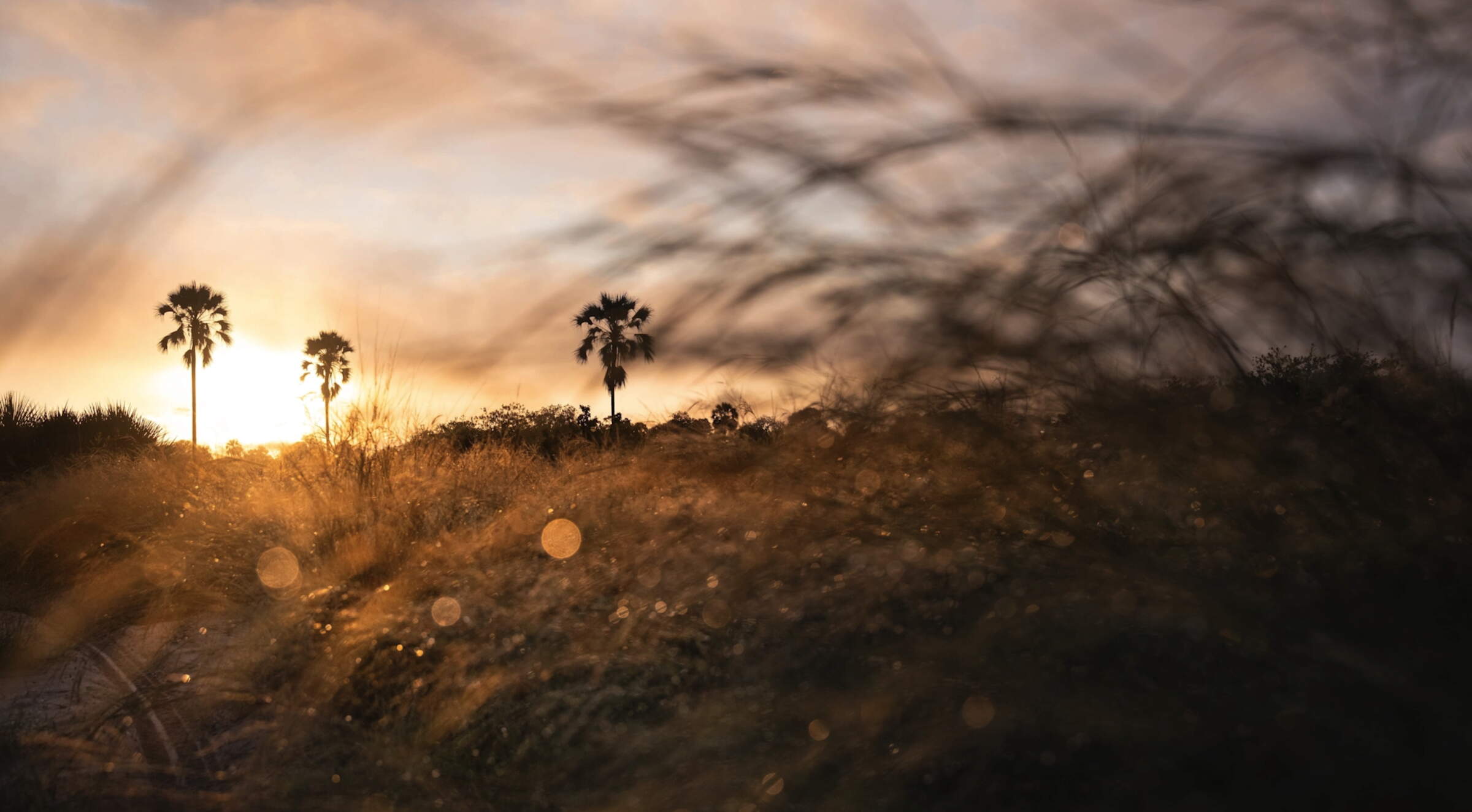
Singita Elela
Singita Elela is an exclusive safari camp on the western side of the Botswana's Okavango Delta - offering superb wildlife and water based opportunities depending on the seasonality.
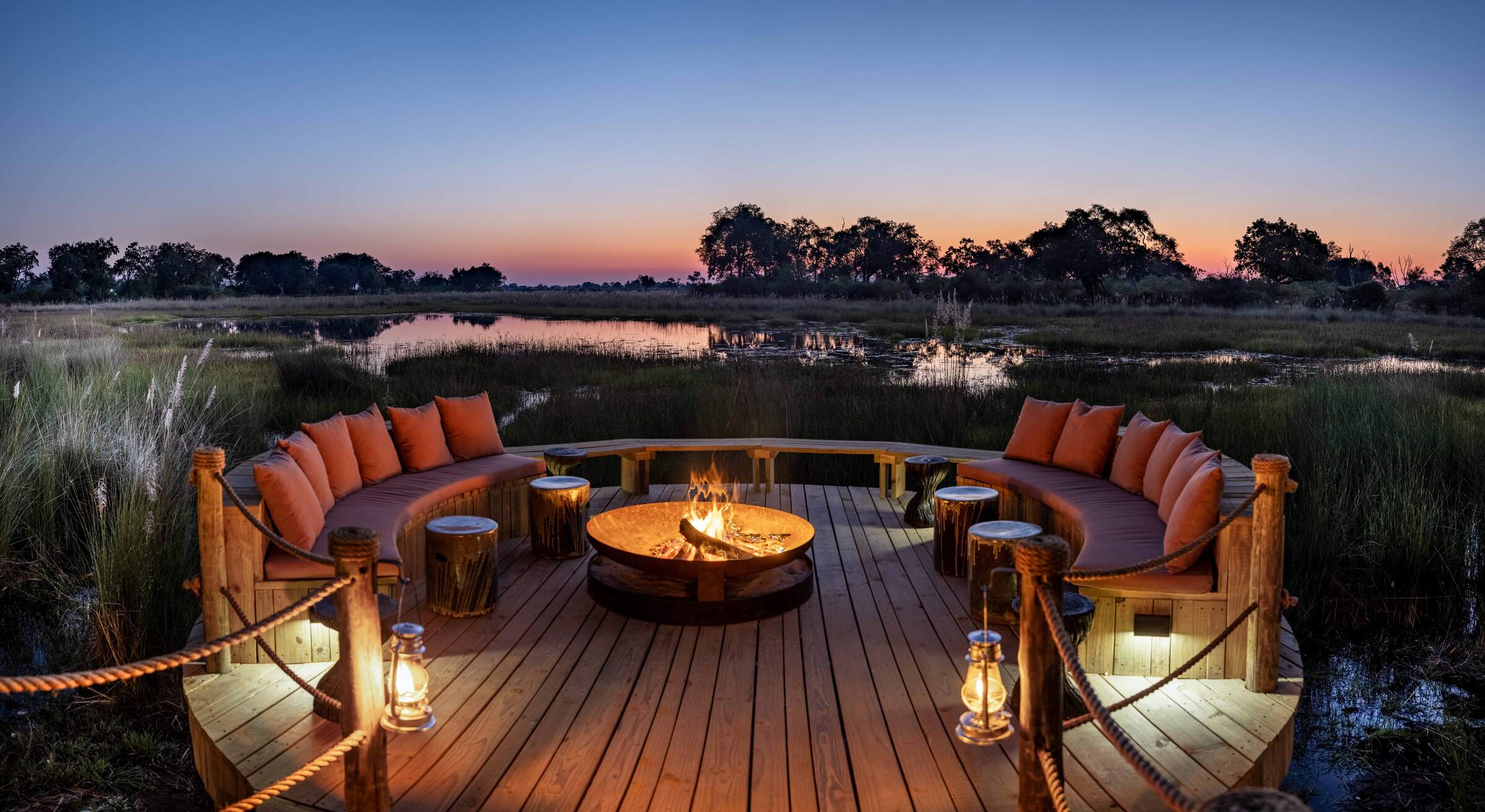
North Island Okavango
Deep in quintessentially “Okavango” territory, between deep-water and dry-land habitats, North Island focuses on a luxury safari experience with very good wildlife viewing opportunities.
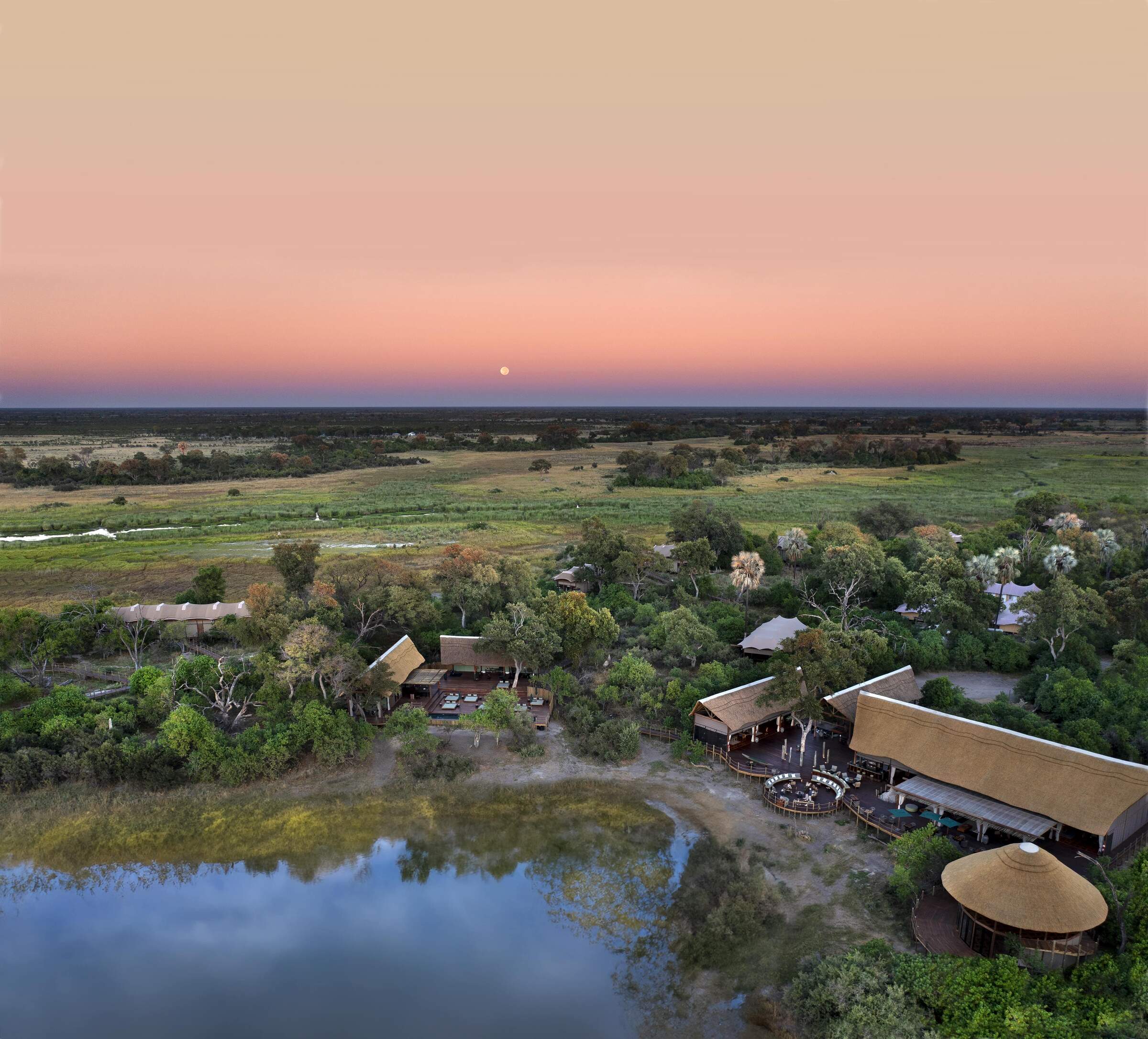
Atzaro Okavango
With a high level of tasteful luxury promised at Atzaro, we think it will be best suited to travellers seeking a touch of pampering alongside their safari.
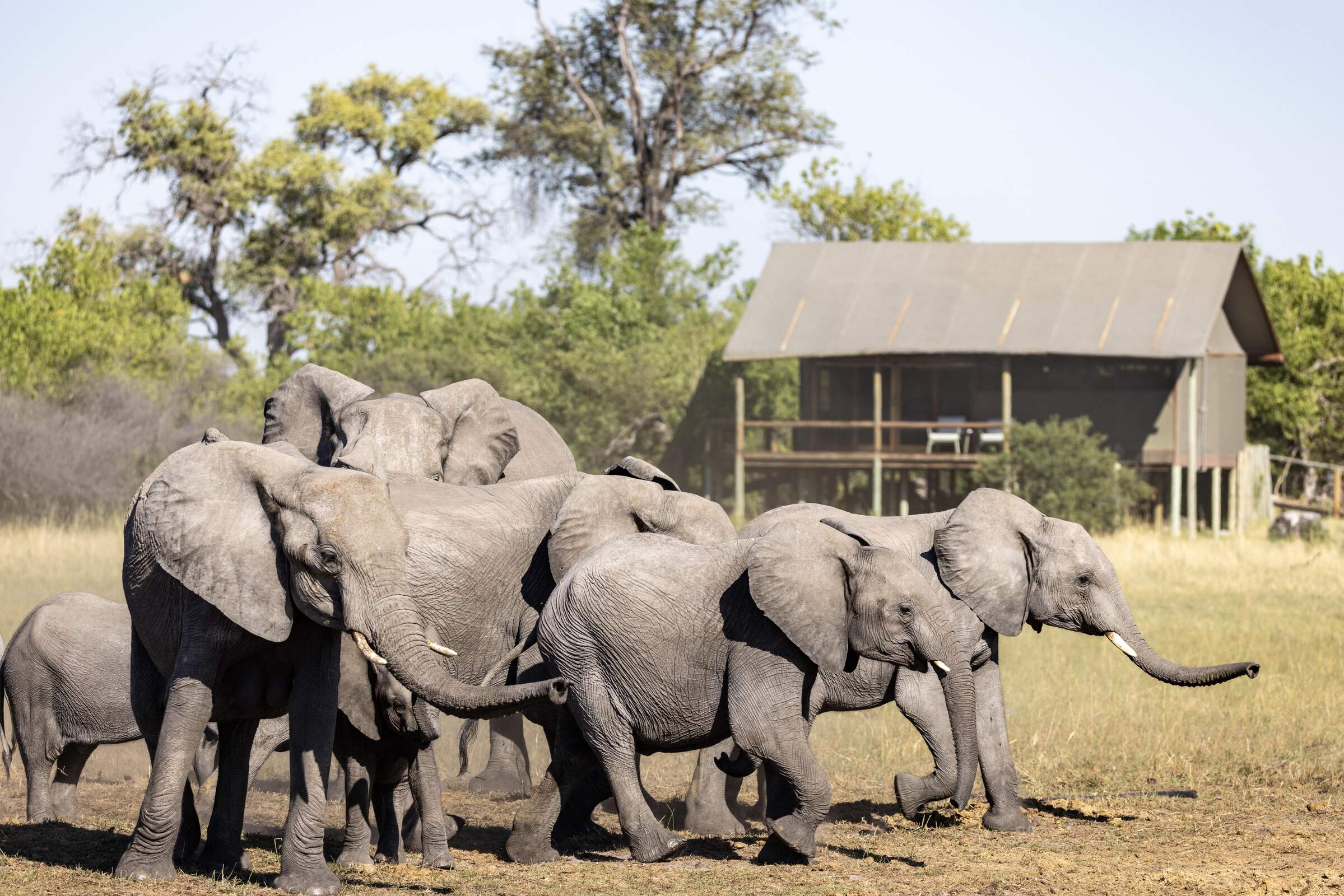
Mokolwane
Deep in the heart of the Okavango, the simple Mokolwane focuses on wildlife viewing in a large, untouched area.
When to go to Okavango Delta Safari Reserves
Our month by month guide: What it's like to visit Baines' Camp in Okavango Delta Safari Reserves
Jan
Feb
Mar
Apr
May
Jun
Jul
Aug
Sep
Oct
Nov
Dec
Okavango Delta Safari Reserves in January
January marks the peak of the rainy season in the Okavango Delta. Evening rains are often short but heavy, accompanied by occasional dramatic thunderstorms. Temperatures remain high, although cooler than the preceding months of October to December. Wildlife can be harder to spot as animals spread out across the lush floodplains.
This month is a birdwatcher’s paradise, with migratory species in abundance over flooded areas. Rising water levels in parts of the Delta make mokoro safaris possible, offering serene and immersive experiences. The vibrant greenery and dramatic skies provide stunning opportunities for photography. With relatively low rates and fewer visitors, January is ideal for those seeking a quieter, budget-conscious Botswana safari.
- Warm temperatures with frequent evening showers
- Birdlife at its most spectacular in the Delta
- Wildlife dispersed, but insects and smaller creatures abound
- Excellent availability in Delta lodges and camps
Our view
A good time to visit, with pros & cons
Weather in January
Okavango Delta Safari Reserves in February
February mirrors January’s weather patterns, with heavy rains and slightly cooler temperatures. The Delta’s landscape is at its greenest and teeming with life. Smaller animals, insects, and vibrant birdlife dominate, as many species raise their young. The rains create temporary pools and waterholes, further dispersing larger game, while thick vegetation and tall grass adds to the challenge of spotting big wildlife.
However, Moremi Game Reserve and select areas of the Delta still offer excellent game viewing opportunities. Rising water levels enhance water activities, with boat safaris providing unique access to the Delta’s watery beauty. February is particularly rewarding for photographers seeking lush landscapes and dramatic skies and birdwatchers, with many migratory species present.
- Warm with occasional thunderstorms
- Many animals with young in the Delta
- Big game dispersed throughout wetlands
- Big game dispersed, but viewing improves in drier areas
- Lower visitor numbers and great lodge availability
Our view
This is not a great time to visit
Weather in February
Okavango Delta Safari Reserves in March
March marks the gradual end of the main rainy season in the Okavango Delta. Sunny days become more frequent, with occasional afternoon thunderstorms. The Delta remains lush and vibrant, with wildlife activity increasing as animals finish raising their young and begin congregating around permanent water sources.
Rising water levels make boat safaris a highlight, offering intimate access to the Delta’s waterways. Birdwatching is excellent, with both resident and migratory species thriving. With fewer visitors, March offers a quieter, more personal safari experience.
- Rains taper off but temperatures remain warm
- Occasional small thunderstorms in Delta
- Wildlife begins congregating around water sources
- Ideal conditions for boat safaris
- Few tourists and attractive rates at camps
Our view
A good time to visit, with pros & cons
Weather in March
Okavango Delta Safari Reserves in April
April brings clearer skies to the Okavango Delta, with the landscape remaining green and lush. Night temperatures begin to drop, especially in the southern Delta. The annual floods from Angola start to flow through the northern Delta, filling channels and lagoons, creating ideal conditions for water-based activities like boat safaris.
Wildlife viewing improves as vegetation thins and predator activity increases with cooler evenings. Moremi Game Reserve and the private concessions offer rewarding game drives, and walking safaris on the larger islands, such as Chief’s Island, become popular during this time. Birdwatching remains excellent, with many migratory species still present. April’s combination of pleasant weather, wildlife activity, and relatively low rates makes it a rewarding time to visit.
- Cooler evenings and occasional light showers
- Floodwaters begin to fill Delta channels
- Predator-prey interactions increase
- Ideal for walking safaris and boat trips
- Popular shoulder season, rates fairly low
Our view
A good time to visit, with pros & cons
Weather in April
Okavango Delta Safari Reserves in May
May is a popular time to visit the Okavango Delta, marking the last month of the shoulder season. The annual floods continue to spread through the Delta, transforming the landscape. Cooler mornings and evenings encourage predator activity, while thinning vegetation makes wildlife spotting easier, though some tall grasses may still obstruct views.
May offers excellent photographic opportunities with clear, crisp air. It's a favourite time for many visitors, combining good wildlife sightings with pleasant weather. Camp bookings throughout the Delta fill up quickly during this period.
This is a perfect month for scenic flights, offering breathtaking views of the advancing floodwaters. Mokoro trips through the Delta’s tranquil waterways provide a unique perspective on the environment. Camps start to fill quickly as the Delta’s combination of pleasant weather and excellent wildlife sightings makes it a favourite among safari-goers.
- Cool mornings and evenings with little rain
- Improved game viewing as Delta grasses thin
- Predator activity increasing in drier areas
- Scenic flights and water activities highly recommended
- Last month of shoulder season for camps
Our view
A very good time to visit
Weather in May
Okavango Delta Safari Reserves in June
June signals the start of the dry season in the Okavango Delta. Days are warm, with clear skies, while mornings and evenings can be cold, occasionally reaching freezing temperatures. The annual floods reach their peak, creating spectacular conditions for water-based activities like boat safaris along the Khwai River and in private concessions.
Wildlife concentrates around permanent water sources as surface water dries up, improving game viewing. The thinning vegetation and crisp, clear air make June perfect for photography. High demand for camp bookings reflects its popularity, as this month combines great game viewing and pleasant weather.
- Warm days, cold mornings and nights
- Peak floodwaters make boat safaris unforgettable
- Wildlife congregates around permanent water sources
- Excellent conditions for photography
- High demand for camps and lodges
Our view
Fantastic: the very best time to visit
Weather in June
Okavango Delta Safari Reserves in July
July offers cool mornings and evenings with warm, sunny days, making it ideal for wildlife viewing. The floodwaters remain at their peak, providing excellent opportunities for boat safaris. Vegetation continues to thin, enhancing visibility on game drives in Moremi Game Reserve and the Okavango’s private reserves.
Large herds of elephants and buffalo are common sights as they gather near water sources. Predator sightings, including lions and leopards, increase as prey concentrates. Birdwatching is rewarding, and the crisp winter air creates stunning photographic conditions. July is one of the most popular months to visit, with many lodges fully booked well in advance.
- Comfortable days, cold mornings and nights
- Excellent game viewing and predator activity
- Moremi and Khwai areas become busy
- Private concessions offer exclusivity
- High season rates; advance bookings essential
Our view
Fantastic: the very best time to visit
Weather in July
Okavango Delta Safari Reserves in August
August remains a highly sought-after month for visiting the Okavango Delta. Nights are cool, while daytime temperatures rise gradually. Wildlife viewing is exceptional as animals concentrate near water sources, while the Delta’s floods are typically at their peak, offering picturesque settings for excellent boat safaris.
Walking safaris and game drives in areas like Moremi Game Reserve and Chief’s Island are particularly rewarding. Large herds of elephants and buffalo are common sights, and predator activity is high, with increased chances of seeing lions, leopards, and wild dogs hunting. The clear skies and lack of humidity create excellent stargazing conditions. With many travellers visiting during European and North American holidays, lodge availability can be challenging.
- Dry, warm days and cool nights in the Delta
- Fantastic wildlife viewing near water sources
- Excellent opportunities for game drives and boat safaris
- Cloudless skies, spectacular stargazing
- High demand for accommodation – book early
Our view
Fantastic: the very best time to visit
Weather in August
Okavango Delta Safari Reserves in September
September is a favourite for many safari-goers in the Okavango Delta. Daytime temperatures rise, but nights remain cool. The landscape transforms as greenery fades, and hazy conditions create dramatic sunsets. Wildlife viewing peaks as animals cluster around permanent water sources, with especially large numbers of elephants and buffalo. This concentration of prey attracts predators, increasing chances of witnessing exciting hunts.
The return of migratory birds enhances birdwatching. Water levels begin to recede, but boat cruises are still possible. Dusty conditions may challenge photographers, but the stunning landscapes and wildlife action more than make up for it.
- Warm days, cool nights in the Delta
- Prime month for Okavango wildlife viewing
- Migratory birds return, enriching birdwatching
- Spectacular sunsets and dramatic scenery
- High season rates, many Delta camps full
Our view
Fantastic: the very best time to visit
Weather in September
Okavango Delta Safari Reserves in October
October is the hottest and driest month in the Okavango Delta. Wildlife concentrates around the last remaining water sources, creating some of the most dramatic game viewing opportunities of the year. Predator-prey interactions are frequent and visibility is excellent, making for thrilling safaris.
Walking safaris are particularly rewarding, especially on smaller islands, but early starts are essential to avoid the midday heat. Towards the end of the month, the first rains may bring relief and begin rejuvenating the parched landscape. Despite the heat, October offers excellent big-game viewing and dramatic photographic moments of animal interactions.
- Hot days, with late-month chances of rain
- Outstanding big-game viewing near water sources
- Water activities limited as floods recede
- Walking safaris provide unique experiences
- Final month of the peak safari season
Our view
Fantastic: the very best time to visit
Weather in October
Okavango Delta Safari Reserves in November
November marks the start of the green season in the Delta. Rising humidity and temperatures often lead to the first heavy rains; these are typically short, heavy showers in the late afternoon or night, creating spectacular scenes and bringing a flush of green to the parched landscape. Wildlife begins to disperse as waterholes refill, but game drives still offer rewarding sightings.
Water levels may be low, limiting boat activities, but November is exceptional for birdwatching, with the arrival of many migratory species. Scenic flights highlight the contrast between dry and wet areas. The first two weeks are popular for travellers seeking good game viewing at lower rates as the Delta transitions into its shoulder season.
- Hot, humid days in the Delta
- Dramatic rain showers , increasing as month progresses
- Migratory birds arrive in abundance
- Wildlife watching good, but less predictable
- Shoulder season offers mid-range rates
Our view
A good time to visit, with pros & cons
Weather in November
Okavango Delta Safari Reserves in December
December sees the rainy season in full swing across the Okavango Delta, bringing some respite from high temperatures. Game viewing becomes more challenging as wildlife disperses, but great sightings can still be had. The landscape transforms dramatically, with lush vegetation sprouting across the Delta. This period is excellent for birdwatching, with numerous migratory species present.
Water levels begin to rise, gradually improving conditions for boat safaris. The green season offers unique photographic opportunities, with dramatic skies and newborn animals. December is ideal for visitors seeking a more intimate Delta experience, with fewer tourists and lower rates at many camps and lodges. The combination of wildlife, birdlife, and scenic beauty makes it a rewarding time to visit.
- Warm temperatures
- High chance of rain in short, heavy storms
- Wildlife more dispersed across Delta
- Game viewing more challenging in wetlands
- Low-season rates and fewer visitors in most Delta camps
Our view
A good time to visit, with pros & cons
Weather in December

Looking for inspiration on where to travel next?
Visit our trip chooser to explore your options and find inspiration for your perfect African adventure
Inspire me